Note
How much would one of your athlete images be to include in a blog post for commentary?
In order to answer the question, I would need to know who’s blog and the context for the use of the image. Typically we would not license our images for this kind of use. Please email us directly: [email protected] with your information.
5 notes
·
View notes
Text
On Seeing, A Journal. #284 Above and Beyond: Marian Wright Edelman. December 18th, 2018
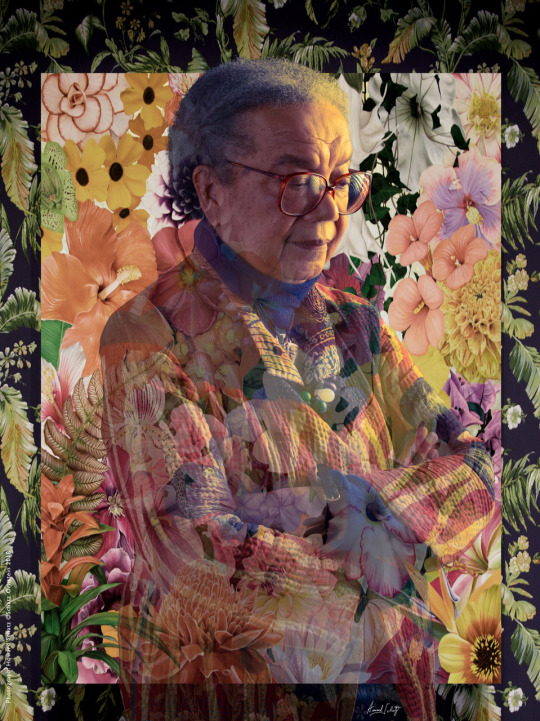
Few Americans deserve the term “public servant” more than Marian Wright Edelman, who, for most of her 79 years, has been a dedicated activist for the rights of children.
Born in Bennettsville, S.C., Edelman has been recognized with awards too numerous to list fully here. They include: The Presidential Medal of Freedom, MacArthur Fellowship, and the Albert Schweitzer Prize for Humanitarianism.
She graduated from Spelman College as valedictorian, and earned her Juris Doctor degree at Yale Law School in 1963. Following that, she became the first African American woman admitted to the Mississippi Bar.
In 1973, she founded the Children's Defense Fund as a voice for poor children, children of color, and children with disabilities.The organization has served as an advocacy and research center for children's issues, documenting the problems and possible solutions for children in need.
As leader and principal spokesperson for the CDF, Edelman worked to persuade United States Congress to overhaul foster care, support adoption, improve child care and protect children who are disabled, homeless, abused or neglected. As she has said of her work, "If you don't like the way the world is, you have an obligation to change it. Do it one step at a time.”
Edelman’s many books include:
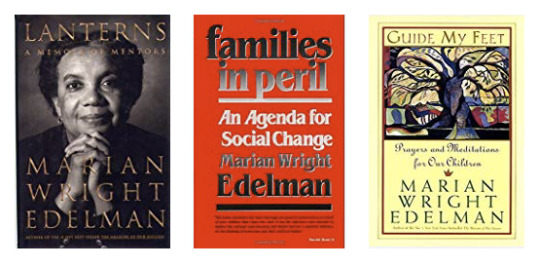
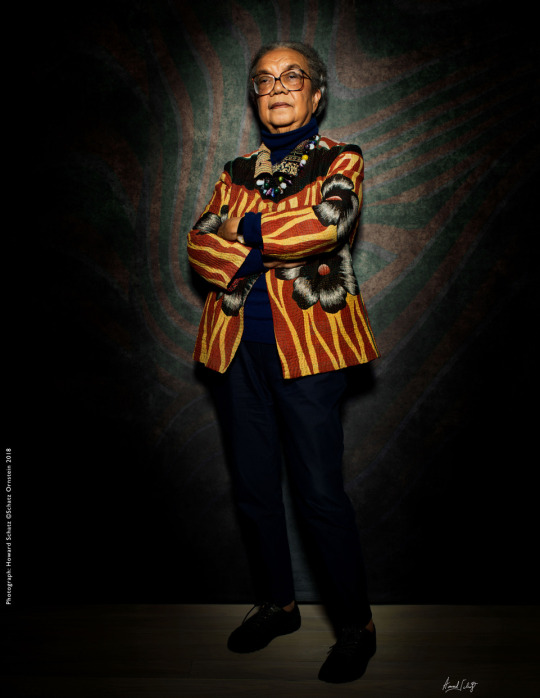
HS: Your three sons, with an African American mother and a Jewish father are at the intersection of two terrible things, racism and anti-Semitism. What did you teach them about these things?
MWE: We’d have dinner table conversations. We discussed the newspapers, we discussed killings, we discussed mistreatment. And we always read everything that went on in the civil rights movement, I never hid anything from them. And so they grew up very aware of the dangers. They were so clear about the outside world. And my grandchildren are, too.
We lived in a privileged neighborhood. But race was always present. God did not make two classes of people, of children, and every human being is sacred, and nobody has the right to invade that set of basic principles. When I was a child, we knew about the outside world, but we also knew we were sacred and that we could make a difference. And every issue that the Children’s Defense Fund works on today comes out of an experience in my own childhood.
I was a rebel from the time I was four or five. While the outside world was there telling us we were not equal and not worth anything, our parents, our community co-parents, our faith made it very clear that we were sacred. The public library was closed to us. However, my father and mother always had books in our home, books would come before a second pair of shoes.
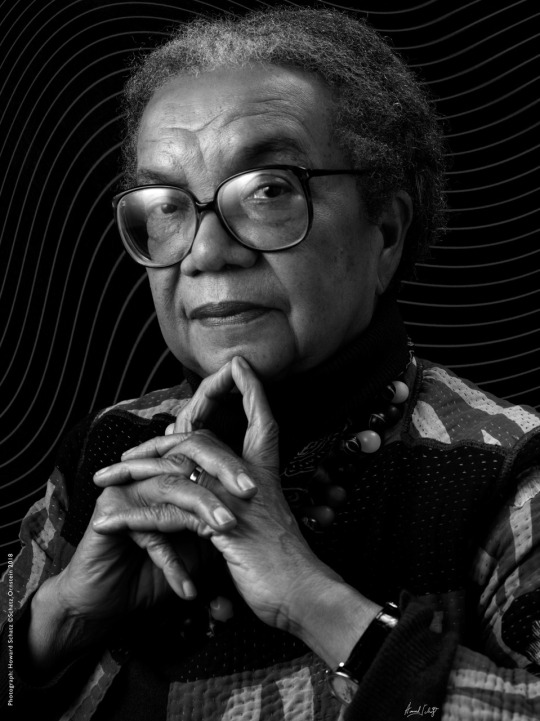
I've had the most extraordinary role models from my community co-parents, my own parents, and then, my goodness, I met all these saints in Mississippi.
Talk about courage. They wanted their children to have a better life and we would file segregation case for them. They knew that they would be kicked off their plantations, they knew they would be shot at. The people of faith that I have seen and the courage of those people keeps me going.
We have been making a dent. There are major laws on the books that are feeding millions of people, that have changed and put early childhood system in place. We have civil rights laws that came out of the most ordinary people.
But we need to affirm what is done. The Children’s Defense Fund is the child of the Legal Defense Fund. Every 50 years we have spurts of progress and then we have “birth defects" flare up, because we’re a very ahistorical people. But we’ve got to confront the truth. We’re in another one of those periods where you have progress and then regression.
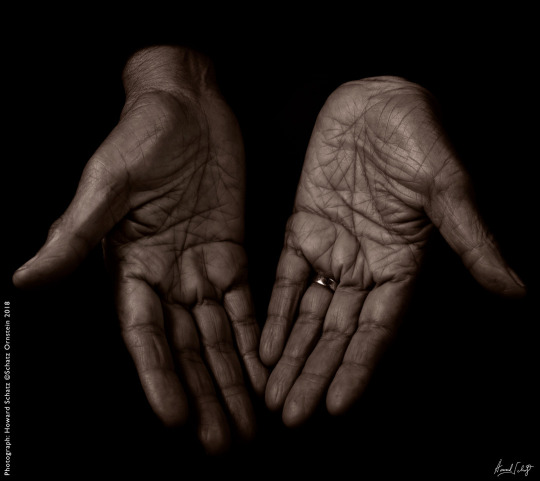
HS: If you had every congressman as your sister or brother, what would they need to do to end that?
MWE: We’ve got a legislative agenda that we put out every year. We’re trying to end child poverty and inequality among children.
Our government has got to do more of what they did last year. We pay a lot of attention to budget processes: Whoever controls the money controls the policy. We report how much it costs to keep these kids in poverty. How you can alleviate that poverty. We say what the policies are. It’s complicated. There's no single bullet, but we lay it out, and we’ve made a huge amount of progress on early childhood.
When we put out our End Child Poverty report and our Portrait of Inequality, and our State of American Children, we’re going to show what it costs, and what it saves. That money goes to making sure that we have a high quality, early childhood system for every child.
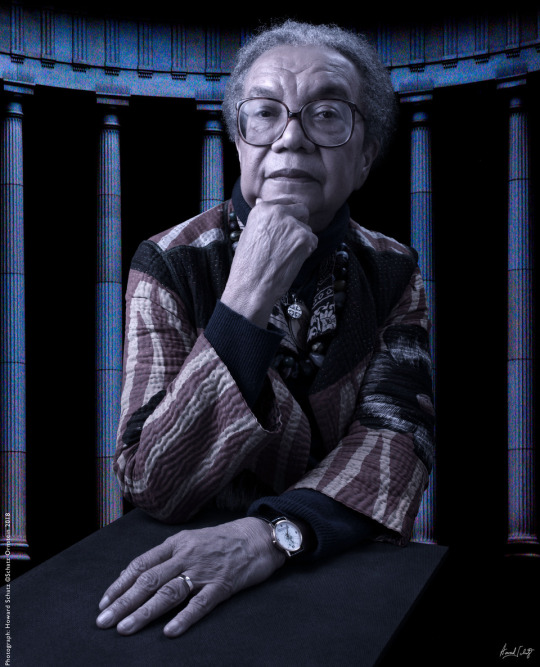
HS: What does that look like, specifically?
MWE: Every child in America should have prenatal care. Every child should be immunized so that we keep children out of hospitals. And we try to say you can't afford not do it; here’s what it costs you to immunize a child, here’s what it costs to keep them in the hospital.
HS: How do you get the government to spend less on a new jet plane and more on its teachers?
MWE: We are always talking about redefining national investment theories. We say how we would pay for everything and we say what a bargain it is. How dumb it is to put children in the cradle-to-prison pipeline.
States are spending, on average, three times more per prisoner than for the public-school pupil. That's about the dumbest thing in the world.
And we also always say this is the right thing to do. It’s the decent thing to do, as well as the self-interested thing to do.
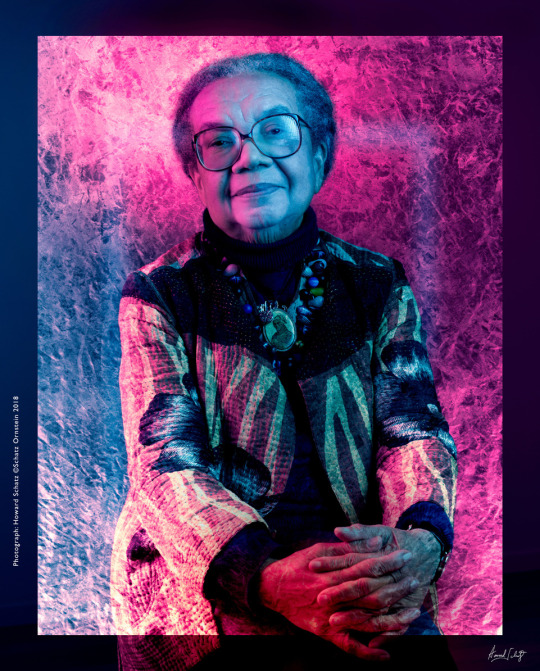
There's an awful lot of hopelessness around. I will never forget two experiences I had with children, one after the riots in Harlem. After Doctor King’s assassination, I went to public schools in inner-city Washington, and told these children not to riot and not to ruin their future.
And a little boy, about ten, looked me in the eye and said: “Lady, what future? I haven't got no future. I haven’t got nothing to lose."
Pretty sophisticated. After Katrina, and all these children from inner-city New Orleans were washed out. And they went over to Houston, and I went through the schools where these children were. And, again, I said, "If you have one thing that you wanted to have me say to the American people, what would it be?" And they said, "Tell them we need hope."
We made a lot of progress, but we’re such a stupid country. I'm determined. I'm not going to have my grandchildren fight these same battles all over again. And Mr. Trump is not going to win. He’s the personification of every value you want your children not to have. He’s a reflection of the system that has locked in the greed of the few at the expense of the many. That's why we’re trying to say: Listen, our children are our future. And you may not like these poor black kids, okay, but they're going to determine how well we compete in the world.
HS: Would you discuss the two sides of affirmative action?
MWE: How do you level the playing field? I don't talk about affirmative action, I just say, "Invest in this child because it’s going to save you this amount of money."
You've got to get a child ready for public school and you’ve got to reform public schools. We should want for other people’s children what we want for our own.
HS: What’s next for you and who’s going to take over?
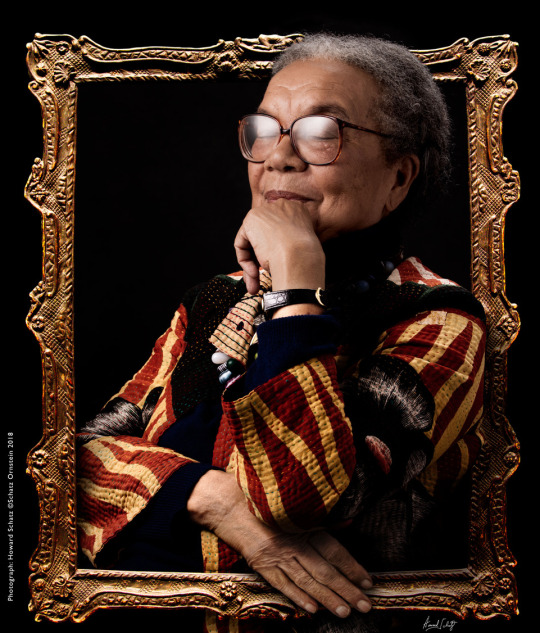
MWE: I'm absolutely going to be spending 100 percent of my time on movement. You've got to reform the basic institutions that form children.
We know what works.
6 notes
·
View notes
Text
On Seeing, A Journal. Above and Beyond: David Brooks December 11th, 2018
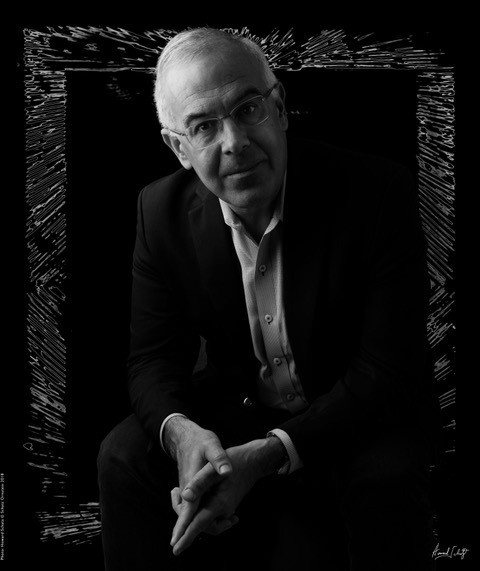
My most recent visitor to the studio for my Above and Beyond project is
David Brooks, a Canadian-born American conservative commentator who writes a political and cultural column for The New York Times. He is a regular contributor to the PBS NewsHour and to NPR’s All Things Considered, and has been a reporter and op-ed editor for The Wall Street Journal. He is a senior editor at The Weekly Standard and also a contributing editor at Newsweek and The Atlantic.
Brooks has written and edited several books, including the anthology Backward and Upward: The New Conservative Writing (1996) and Bobos in Paradise: The New Upper Class and How They Got There (2000), On Paradise Drive: How We Live Now (and Always Have) in the Future Tense (2004), The Social Animal: The Hidden Sources of Love, Character, and Achievement (2011), and The Road to Character (2015).
HS: You've said "politics is being overtaken by tribalism.” Would you expand on that?
DB: We used to have community, and community is based on common affection and trust.
Jane Jacobs, who wrote Death and Life of Great American Cities, described looking out her window one day and seeing a little girl trying to get away from a guy kidnapping her. And she (Jacobs) couldn't help, and she thought: Maybe I should go down and intervene. And then she noticed that the butcher’s wife had come out of the shop, the fruit stand guy had come out, somebody had come out, the locksmith, and the guy was surrounded. And it turns out it wasn’t a kidnapping, it was a just a dad calling his daughter.
But, that's what community is like. And she describes it very famously as a ballet on the street. And we used to have those ballets in a lot of neighborhoods, where people could trust each other, they looked out for each other, they kept each other safe.
Over the last 50 years, we sort of lost that, we lost social capital, as they say, and we’re more isolated and alone. And when people are isolated and alone, they do what the revolutionaries tell them to do, which is they revert to tribe. And tribalism looks like community, because it is a kind of bonding and belonging, but it’s based on mutual hatred and not mutual affection. So, it’s always us/them, friend/enemy distinctions. And if you look at polarization today, it’s not that people love their own political party so much, they just hate the other one. That's the motivator, that's tribalism.
HS: Hasn’t humanity always been tribal? Isn't it in our bones?
DB: Well, it’s in our bones to make friend-enemy distinctions. It’s not in our bones to have a set of communities that rule out other communities, that have to be hostile to other communities. But it is possible to have a set of people where I'm in my community, you're in yours, I've got nothing against you and we’re probably joined by a higher community, which is our national community.
HS: How do you find civility?
DB: I think you have to get away from that sense that people who have that are naked and alone in a world that's hostile. Where people can't be trusted. And so, my basic view is, you have to start with local dinners with neighbors, where people actually get to know each other.
HS: I'm sure that happens, probably all over the United States, in various little towns, but it doesn’t seem to be infectious, it doesn’t seem to last.
DB: Yes. And there are a lot of reasons for that. I would emphasize the culture of individualism that says, "I need as much space as I can to be myself." It’s also probably true that as we get more diverse, it gets a little harder to form communities.Then there are some values; we value privacy above all. And so, in most nations around the world and at most times in America, it was very normal to go up to somebody’s house who you sort of knew, and knock on the doorbell, or ring the door. And now that never happens. You would think, no, I'm invading their privacy. I'm not going to do that.
We put incredibly high priority on privacy, also on work. We work really hard and then when we get home, we just want to relax, we don’t want to socialize. There's a lot of value put on that.

HS: The gulf between peoples seems pervasive all over the world. Within any country, there are us and them. Muslims and Hindus. Christians and Jews. It’s seems like your dream of a loving, compassionate vision is something that’s not within the human genome.
DB: I covered the Soviet Union coming down, the coming together of community there. I covered Nelson Mandela coming out of prison, the end of apartheid there. I covered the unification of Germany. And you saw these surges of people trying to come together across differences. And we had a country here, a political system, where it wasn’t complete partisan warfare, the way it is now. That's been a deteriorating issue we’ve had for 30 years.
HS: I think it goes way back, such as famous politicians who hated George Washington.
DB: Of course, politics has always brutal, but then politicians also worked together across party lines. Thomas Jefferson and Alexander Hamilton, famously, hated each other, but they served in the same administration. And if you looked at the votes in most parties or most congresses, there was plenty of overlap. If you look at the Supreme Court, only two percent of cases 20 years ago, were decided on party lines. Now it’s well over 20 percent. There are concrete measures of growing tribal distrust. If you’d asked people a generation ago, do you trust the institutions of society, 70 or 80 percent said, yes; and now it’s only 20 percent.
HS: Is this deterioration a sign of the end of our civilization? I mean, all empires self-destruct eventually?
DB: Yes, it could be. When Gibbon described the end of the Roman Empire, he described it as a collection....Not a really functioning society anymore. Just a collection of isolated individuals.
So, it could be, but I sort of doubt it. We go through bumpy times. If you look at 1968, it was way worse. If you look at 1932, it was worse. There have been times in our country where we’ve been in similar circumstances to today.
HS: Is Trump as our president a symptom or a cause of our problems?
DB: Well, it’s a symptom and a cause. He was elected because so many people are disgusted with Washington and hate what’s been done to them, or are disgusted with outsiders. And now he gets himself at the center of attention every single day by making friend-enemy distinctions, by saying those are evil people, we’re good people. He grew out of this distrust, but he plays on it and exacerbates it.
HS: Can we survive him?
DB: I think so. It won't be easy, I don't think our politics is going to recover for a long, long time. It will take a social recovery before we get a political recovery. But say he lasts another two years, we’ve endured two years of it, so far nothing. We’ve had a deterioration in norms and how we treat each other and think of each other. If he’s gone in two years, maybe it’ll get worse, maybe we get another version of Trump. But it’s possible that you can snap back. I just think that nothing is determined in life. And there are parts of the society that are actually kind of healthy, our economy, things like that.
HS: Nothing’s determined, you can't predict the future for anything ever, really. What bothers me is the silence of good Republicans. There are bright Republican Congressmen and Senators. There are conscientious nation-loving human beings who are mute. They shudder that they have this president, but they relish what he brings them.
DB: I've had many conversations with them on this subject. And, of course, I would like them all to speak up. And they say: Well, look at all the people who’ve spoken up, their careers are over. And so, what good would it do the country for my career to be over? Trump would still be Trump. You’d get some lunatic in place of me. And so, I’ll wait for my moment. I give them credit for some strength in that argument; if you speak up against Trump and you're in the Republican Party, you lose your next primary. The loyalty among Republican voters is to Trump. And not even to the party, just to Trump the person.
HS: You've said: Trump takes every wound and repeatedly pokes holes in it. What do you mean exactly?
DB: In our nation’s history, the most famous wounds are racial wounds. And so, he pokes at any racial prejudice and racial division. Religious wounds, city versus rural, pretty much all the divisions you can think of in society. The native versus the immigrant…he inflames one side or another of these divides. It’s just his marketing strategy. But, partly, it’s hard not to believe that he doesn’t have some level of bigotry. And then, finally, I think he just was raised in a culture of distrust. That the outsiders are out to get us, that life is a do or die battle.
HS: What leaders do you most admire today?
DB: I like a lot of senators. But mostly the happiest people I know are mayors, because they're actually doing stuff. The unhappiest are members of Congress. For example, a mayor I admire, though he’s controversial, is Rahm Emanuel of Chicago who came into a city that was vastly in debt, with school systems that were totally failing.
He got the city out of debt and he closed some schools, and I think graduation rates have increased phenomenally, more than any other city in America. Not only because of him, it’s been through a ten-year project. And he’s just announced he won't run again, so he made a lot of enemies doing this stuff. But I think there are tens of thousands of children in Chicago now who have better education because of what he did.
In Washington, you find people who are doing the best they can under bad circumstances. General Mattis, the Secretary of Defense, is doing the best he can in a bad circumstance. Some of the senators, Amy Klobuchar from Minnesota, a Democrat. Ron Wyden, Ben Sasse, a Republican. They’re trying to do legislation in a bad circumstance. So I give them respect.
HS: How would you change these negative circumstances? Obama tried.
DB: He had the right feelings, he didn't have the right relationships. He didn't have a relationship of trust with the leaders of Congress, even in his own party. I don't think he liked hanging around with politicians, they just weren't his cup of tea.
HS: How do you personally maintain a conservative bent, yet work for the New York Times?
DB: I have a worldview. If I didn't have a worldview, I couldn't do my job. It’s informed by Edmond Burke and Alexander Hamilton, both of them conservative-ish guys, at least by the traditional definition of conservatism. So, I think my views are reasonably predictable. When you're writing for The Times, you're writing for a mostly progressive audience. And in that case, you just try to show respect.
HS: Can you change people’s minds?
DB: I think you can. I really think you can. By saying: Well, you believe X, here are the nine facts to prove that Y is possible. You can give people, a better way to live and their norms and values will subtly change.

HS: But what about the 40 percent of Americans who are pro-Trump, despite the fact he’s allergic to the truth?
DB: I wish they would change their minds. But I spend most of my life with these people, and they say: Listen, I needed a change. I know he’s a jerk. I don't pay attention to all that circus stuff, all those tweets. But the economy is doing better, I feel like he’s shaken up Washington. I mean, they have their reasoning and it’s not completely idiotic.
HS: You worked on a police beat in Chicago. How did that influence your thinking?
DB: Profoundly, even though it was a very short time. I wasn’t even sure I wanted to do journalism, I knew I wanted to write. But when I did the police beat, I came home every day with a story, and it was fun and exciting. I was super left wing, and the parts of Chicago I covered were some of the worst parts of Chicago at the time -- Cabrini Green, and the Robert Taylor Homes -- these big projects. And what I saw was earnest, well-intentioned social reform that had disastrous consequences. And it taught me that society is really complicated. And if you're going to do change you should do it incrementally. And be aware that you're probably going to have a lot of bad consequences you can't anticipate. And that's more or less Edmond Burke’s philosophy, so it turned me a little more conservative.
HS: What is your process? You must have a time when you write, and then when you read. You must have time when you go to movies or have fun.
DB:The fun part is the hard part. My rule is the more creative the profession, the more rigorous the schedule has to be. So I write from eight ‘til noon every day. And my wife knows to get out of my way. Before I've written, I'm just not a good person. After that, I relax. And so, if I've got my thousand words in then I relax. I listen to movie soundtracks. I need music, but I can't have any lyrics, so I listen to music soundtracks.
HS: What are your thoughts about immigration?
DB: I'm wildly pro-immigration. I was sort of raised by my grandfather, who was an immigrant and had a strong immigrant mentality. So, I admire the hustle of people who are immigrants. And then, just objectively, I think that immigrants are great for this country. They're less prone to commit crimes than natives. They're much more economically creative than the rest of us. Their family values are better. They're much more communal.
HS: And our racial division in this country?
DB: I'm somewhat optimistic about it. Since Ferguson, there's been a period of truth-telling. A lot of African-Americans saying things they wouldn't necessarily say in public or in mixed company. And that has not always been pleasant. But I think it’s a necessary stage to go through. I travel around the country with a team from the Aspen Institute, and we hold these dinners with people who are working in communities. And sometimes our dinners will be 40 percent African American, and sometimes the mood is really angry. But, I think that has to be expressed for us to move on and understand the situation in the country.
HS: Are there opinions you've written that you regret?
DB: Oh, for sure. I was a strong supporter of the Iraq war, that was pretty clearly a mistake. When I was young, before my kids were born, I would write hit pieces on people. Really criticizing, making fun of people, taking advantage of my verbal abilities to make others look small. And once my kids were born, then I said, "No, I don't want my kids seeing me as this kind of person." And so, I more or less stopped writing them.

HS: You often talk about the soul and heart and how people have the desire to do good.
DB: Maybe that's midlife awakening. A lot of our problems come from giving that desire to be good short shrift.
4 notes
·
View notes
Text
On Seeing, A Journal. #282 Above and Beyond. Playwright, John Guare. December 4th, 2018

The cast of my ongoing project Above and Beyond was joined, recently – and perhaps fittingly – by the great American playwright John Guare. He is best known for his plays “Six Degrees of Separation,” “The House of Blue Leaves,” and “Landscape of the Body.”
Guare, born in New York City, is now 80 years old, and says he wrote his first play when he was 11.
His style, which mixes comic invention with an acute sense of the failure of human relations and aspirations, is at once cruel and deeply compassionate.
Guare’s plays have won every imaginable award, among them, many Obies, the Laurence Olivier American Airlines Award for Best New Play, several Tony awards, New York Drama Critics awards, and the PEN/Laura Pels International Foundation for Theater Award for a Master American Dramatist. In 1993 he was elected to the American Theater Hall of Fame.
After our photography session, Guare and I sat down to talk.
HS: You’ve said, " I love theatre for recognizing that everything is something else.” What does that mean?
JG: That’s what makes poetry possible -- that everything is something else. There is no event, no incident, no object that cannot become something else. Yes, everything is something else, because everything is made for art.
HS: You’ve also said, “Theatre is a place of poetry, suggestion and dreams."
JG: Well, I couldn’t say it better myself, even if I did say it. That’s the best thing about the theatre, that the theatre is the place of transformation, and the removal of a mask. People go to theatre to see the mask removed.
HS: And, you've said, “Theatre has never been an easy place."
JG: Never. How could it be? It’s always competition. On one level, just trying to get fannies into the seats. I can write something but how do I get people to come and see it?
The fact that a play even opens is a miracle. That you got X amount of people to come together to meet on a certain day -- a director, a designer, actors -- all to show up and tell the same story as the writer is telling, or even for all the people involved tell the same story. Everything conspires against getting a play on.
And then having it run is just beside the point. Anything else is pure gravy. The fact it even got on is what is extraordinary. But the competition is mainly to be heard. There are so many valid voices out there. Why should mine be heard?
Moss Hart said, brilliantly, "An audience will give any play 15 minutes of their time. They’re there; they’re yours for 15 minutes. And at the 16th minute they’ll decide if they want to go on that journey or not"
The audience comes to a play to be costumed, and a failed play means the audience chose not to be costumed in the garb that the playwright and the people on stage have chosen to confer on them. And that’s what that first 15 minutes is about.
It is extraordinary that, in those first 15 minutes of a play the entire conflict is laid out and we’re given the imagery to hang onto to make that play come alive. The imagery is what’s going to garb us, what’s going to cloak us. It’s extraordinary what the first 15 minutes of a play are.

HS: Are there guidelines as to what ingredients need to be written into those first 15 minutes?
JG: The first 15 minutes needs to convey the central conflict of the play and the emotional coloration in which that conflict will take place.
HS: I recall that you said in writing House of Blue Leaves, the first act flowed readily, but it took you five years to complete act two.
JG: I didn’t have the craft to handle eight or nine people on stage. It’s a hell of a lot of people to know how to balance and not lose them. It took me a long time to learn.
Actors just can’t sit there. They have to be doing something. It’s maintaining everybody’s motivation and everybody’s action, because everybody, every character in the play, has to think that the play is about them or they don’t belong in the scene. It took me a long time to learn the craft of dealing with many actors on stage.
HS: The theatre is constantly coming up with innovation, new ideas, new ways of seeing things. Do you derive inspiration or ideas from seeing the plays of others?
JG: Of course. I see as many plays as I can. I love to go to the theatre. I have learned a lot. I watch a lot of the new technology. I don’t get seduced by it and say, oh, it’s new, let’s use it. I say, how can I use this? Coupled with less is more.
HS: What are you working on currently?
JS: We’re doing a new play, called, "Nantucket Sleigh Ride", at Lincoln Center that opens March 18th, so I’m the luckiest guy in the world to have a new play, and an old friend, Jerry Zaks, who’s directing it. I love Jerry, and I’m loving the cast that we’re assembling. So I’m trying….Whenever I go into rehearsal with a play I like to have another play ready to work on the morning after.
HS: When you write, do you surprise yourself?
JG: I hope so. All the time, actually. You just say, oh, I didn’t expect that to happen. Every play has its own life. There are no rules to apply. I mean, we’ve been working on Blue Leaves to go back to the past, 100 years ago, and I did not…never expected Artie to kill Bananas. It was never in any of the notes, never. And when it happened I was so upset I got up and I threw up.
The characters take on their true identity, where they really want to go, and you have to let them go, give them the grace to go.

HS: What is curious to me, as an artist you have to turn your work over to others; the director, the lighting, costume, actors; set.
JG: No, I don’t. I’m sharing it with them. I’m letting them into the process.
HS: You have control?
JG: Yes, I do. If you check the Dramatists Guild contract, nothing can go on that stage without the playwright’s consent. The playwright can choose to give up that consent and allow the designer, or the costume designer, or the casting director to put whatever they want into the play. But everything that will be on that stage has to have approval of the dramatist. And that’s what the Dramatists Guild exists for… only for that purpose.
That’s what holding the copyright of our own plays means. Writing for movies is so humiliating, because you give it over and you don’t know what you’re going to see of anything. That’s why I love the theatre.
HS: What if a director wants to do this and you don’t want him or her to do this?
JG: I would fire them as I’ve done on a couple of occasions.
There’s a difference between disagreements and coming to compromise, and understanding where you might be misguided. I’m not a fascist. There are some playwrights where nothing can be changed.
HS: Your plays are done in lots of different places.
JG: I’m only interested in the first production, and the first production should be a touchstone in how the play should be done. I just had my three Lydie Breeze plays done together for the first time in Philadelphia. And it was like a set I never imagined, with a cast I never imagined. And it was absolutely thrilling. It went from one until ten o’clock. And it was nothing like I imagined, a revelation, so it was just a gift to me.
HS: Does the opposite occur?
JG: Absolutely, absolutely. Oh, very much so; very, very, very, very much so. But that’s why I don’t go and see out-of-town productions. The nightmare of a bad production is they’re showing me the truth of my play. And that’s why I avoid it: self-protection.
HS: I read about how Six Degrees of Separation came about, a story you heard. And then I understand about this young man who was a sociopath; a brilliant, imaginative, awful human being, how afterwards he then was resentful that you would write a play that was essentially, he thought, about him. And created pain in your life, I heard there was a lawsuit, there was a harassment.
JG: He was trying to kill us… it was like death threats. I don’t want to go into it.

HS: Has the current administration in Washington affected theatre or your work?
JG: Sure; it’s screwed up everybody’s heads. Everybody’s…there’s nothing that we don’t see today that we don’t see in the life of injustice, of cruelty, of sheer meanness; relations between men and women. We can no longer look at things with the eyes of the tens, the nineties, the eighties, the seventies, the sixties, or whenever.
2 notes
·
View notes
Text
On Seeing, A Journal. #281 Above and Beyond. Eve Ensler November 27th, 2018
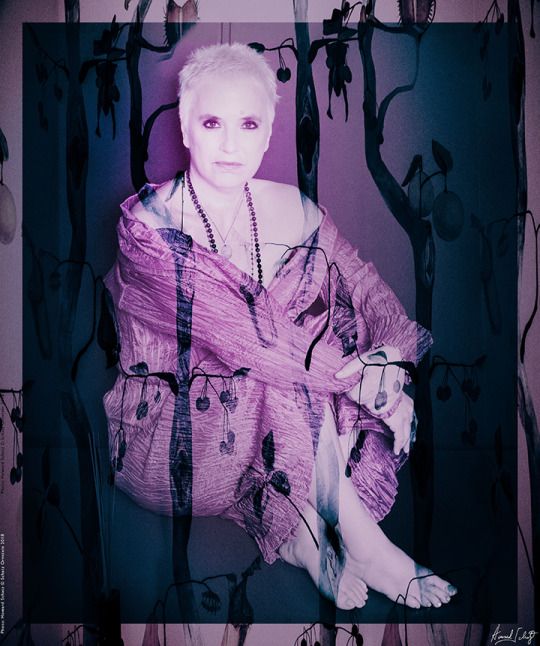
Eve Ensler has accomplished many things, including the writing of nine plays. She is best known for her play The Vagina Monologues, written in 1996. The once controversial and hugely influential play has become a classic, translated into 48 languages and performed in more than 140 countries. It won an Obie Award in 1997.
She has received many other awards including a Guggenheim Fellowship and an Isabelle Stevenson Award at the 65th Tony Awards.
For my project Above and Beyond, I was very pleased to have Eve Ensler come to the studio for a portrait sitting and interview, which follows.
HS: How has The Vagina Monologues, and your work in general, impacted our culture?
EE: When I started The Vagina Monologues over 22 years ago, no one could say the word vagina. We couldn’t say it on television. You could say penis on television, you couldn’t say vagina; people say vagina now, and say it everywhere and on television. It doesn’t seem unnatural, and it doesn’t seem strange.
When I started to do the play the number of women who would come up to me afterwards, would literally line up to talk to me, I thought, great, they’re going to be talking to me about their wonderful orgasms and their sexual desire. In fact, what most women were lining up to tell me was how they’d been raped or battered, or abused. So, that’s why we started V-Day 22 years ago, to see how we could use the play to stop violence against women and girls.
Our movement has allowed discussion about the right to talk about and think about, and protect our bodies. I look at what this next evolution is through the #MeToo movement, or the #Time’sUp movement; all those grow out of the work we’ve done. It’s a continuum.
When I went through airports people would stop me and they would say, I saw you in the Vagina Monologues. Now people stop me and say, I was in the Vagina Monologues. I think this year there were 500 colleges that did the show, and every year there are hundreds. Young women not only have come into their sexuality and feel good about it, but they have become activists, leaders, and people who are fighting for social justice. They’ve become social workers and funders.
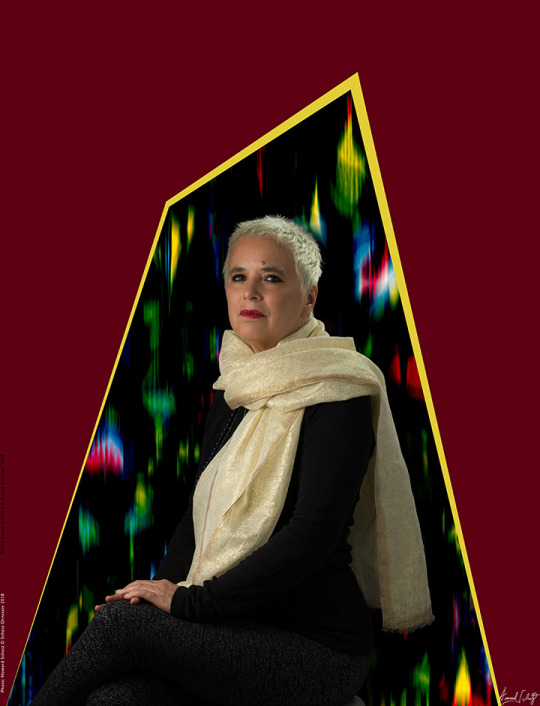
HS: Regarding the violence of men toward women. What is that about? Where does it come from?
EE: Patriarchy, which is only 17,000 years old. If you think about humanity, we’re 200,000 years old. Patriarchy occupies a very small period of time within the existence of human consciousness, and I think it is deadly. I've thought about this for most of my life, being a survivor of sexual abuse, and incredible violence.
What compels a man to rape a woman who says, "Stop?" What compels men to grab someone’s body at work, or harass someone? Or a father raping his daughter as in my case.
You grow up in a system that has taught you that men have all the rights. It’s first of all about domination, and the belief that there is one gender superior to another with the right to dominate. It’s a belief in the all-powerful father. But really, if you look at what it’s about, it’s about toxic masculinity and bringing up boys to believe, for example, that they can't be weak; weakness means you’re emotional, that you’re vulnerable, that you’re able to cry, that you’re able to express your longing and desire, and your depth, and your empathy. Empathy is completely ruled out because empathy makes you weak.
If you look at military training, one of the first things they beat out of young recruits are their feelings. You’re not allowed to feel worried, you’re not allowed to feel fear, you’re not allowed to feel vulnerable or terrified, you’re certainly not allowed to feel any empathy for your enemy, who you will be killing, because if you feel for them you will not be able to kill them.
I think we cannot underestimate what happens to young boys when they are told every time they have an emotion, to shut it down. Not to feel. Not to cry. Not to care.
What is in the hearts of men that allows this kind of violence? I think it’s the central question of our times. It’s the same thing that allows us to destroy the earth, it’s the same thing that allows us to separate immigrant mothers and migrant mothers, and undocumented mothers from their children. It’s the hardening of the heart, and that patriarchal kind of bubble is the bubble under which the entire planet right now is suffocating and being incinerated.

HS: Do women have a responsibility in this situation?
The people who are responsible are men, and even the good men, the men who don’t rape, the men who don’t attack, the men who don’t batter, the men who don’t harass women; they are silent bystanders. They are silent participants if they are not standing up in a powerful way to end this violence.
They have daughters, they have mothers, they have aunts, they have wives, they have girlfriends…why isn't this fight their fight? I honestly think if we’re going to undo patriarchy men have to lead this, because they are the people who benefit from it.
HS: Where was your mother when this was happening to you?
EE: My mother was a poor woman who had nowhere to go, who married a man who had money, then had three children. My mother didn’t have a job, my mother didn’t have work, my mother was my father’s fourth child. She was devoted to my father, she was his child. She served him.
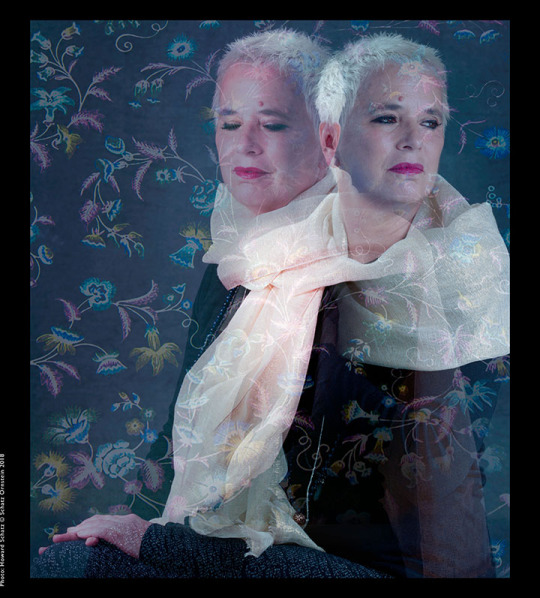
HS: But when you suffered what happened?
EE: I can blame my mother for not standing up, and believe me, I've had periods in my life when I did blame my mother, but in the end I have to say, my mother was as much a prisoner to patriarchal oppression as I was. What was she going to do with a violent man who was her husband? She was just as afraid of him as I was. We all were. We lived under his tyranny. There are battered wives, before they reach that point where they are willing to stand up to their abuser, they are the greatest defenders of the abuser. Because to reckon with what has been done to you, to understand the oppression you’re suffering, to step into the pain you are actually feeling is really, really difficult.
I think when you’re abused as a child, in whatever form, sexually or physically, you are a consequence of violence. My whole childhood was about being violated in one way or another, whether I was thrown against walls, or threatened with kitchen knives, or punched in the nose in restaurants. And then the early childhood sexual abuse completely screwed my mind.
I think by the time I was 17 I was an alcoholic. I was already drinking every day, and I was drugging every day. And I grew up in the 60s, and I was stoned all through high school. All of that was just not to feel the horror that was inside of me, and I reached a point where I had drunk and drugged myself to the bottom. I was insanely promiscuous, I didn’t know who I'd end up with every night, I would just go out and…. I grew up believing that if somebody wanted me sexually, I didn’t have a choice to say no, because I had never had a choice to say no. It took me years to understand that if someone wanted me, I could actually say, I don’t want this. Because it had been programmed into me that I didn’t have a choice.
I was very fortunate that when I hit 23 or 24, and I bottomed out, and I was near death, that there were people who intervened, who really took me into a program and helped me recover.
HS: I've seen some of your talks with an audience of women. Have you spoken with groups of men?
EE: When I started doing the Vagina Monologues, very few men came to see it. Now when it’s done, it’s half and half in the audience. That’s changed completely. And I can't tell you how many young men would come up to me and say, thank you for this play, I've learned so much about vaginas. My girlfriend was raped, and now I feel like I know how to approach it.
I've never hated men. I've never felt like men are awful. I think men are irresponsible. I don’t think men are standing up in ways they should be standing up.
HS: When the interview and portraiture had ended and Eve Ensler was at the door, about to leave our studio, I said to her, “There are a number of famous paintings, each of a woman posing on a chaise which have been done by many famous artists" I then described it and showed her images.

"The Dresden Venus" by Giorgione,

"Reclining Venus" by Titian,
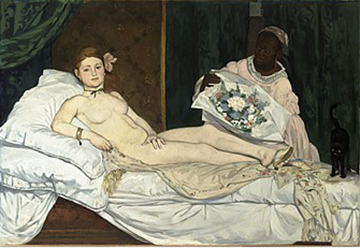
“Olympia" by Manet and

"The Grande Odalisque" by Ingres,
"Since you are so in touch with sensuality and your own sexuality would you consider our working together to create such an image of you sometime?” She responded, “I’ll think about it.”
She wrote me a few days later and we set about making plans.

Eve Ensler as “The Grande Odalisque."
6 notes
·
View notes
Text
On Seeing: A Journal #280 Bodies of the NFL: Elijah McGuire. November 13th, 2018

Though I’ve recently concentrated on defensive players for my "Bodies of the NFL" series, not long ago one of the league’s most explosive running backs came to the studio for some “under the armor” portraits.
Elijah McGuire, like many running backs, is relatively small for an NFL player (perhaps only in professional football can one call 214 pounds "small"). His power, both straight ahead and lateral, is concentrated into a compact, muscular 5’10” frame, and it’s tempting to see him as a compressed spring ready to burst full speed through whatever space, however small, his linemen teammates give him.
McGuire played his college football for the Louisiana–Lafayette Ragin' Cajuns from 2013–2016. In his 4 year college career he rushed for 4,301 yards, scored 42 touchdowns and had 1,394 yards pass receiving.
He was drafted by the Jets in 2017.
McGuire was very comfortable in front of the camera, and quickly understood what I wanted us to accomplish. I sometimes wonder if the extensive study of playbooks required of pro football players gives them the ability to quickly “get” instructions. In a way, photographing football players, with their long years of being coached, is not unlike my work with dancers – both are highly trained athletes and acutely tuned in to direction.
In the session, I followed my usual approach, making tightly focused still shots that highlight the body type for a particular position, then a photo to simulate on field motion, and finally a portrait.
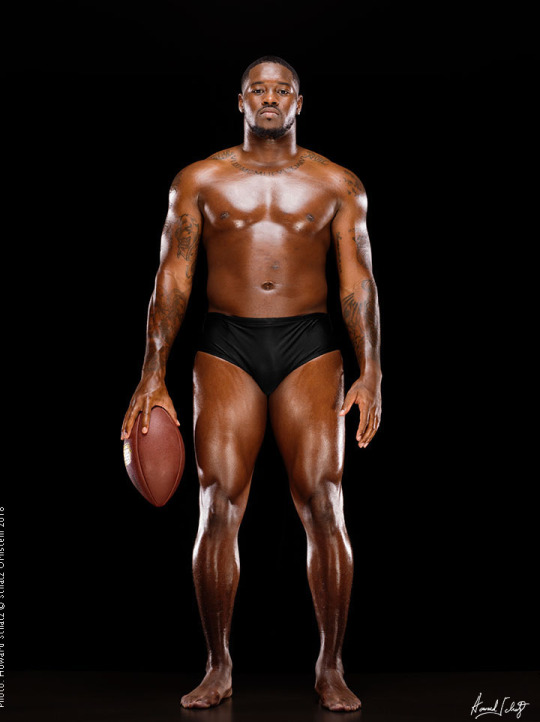

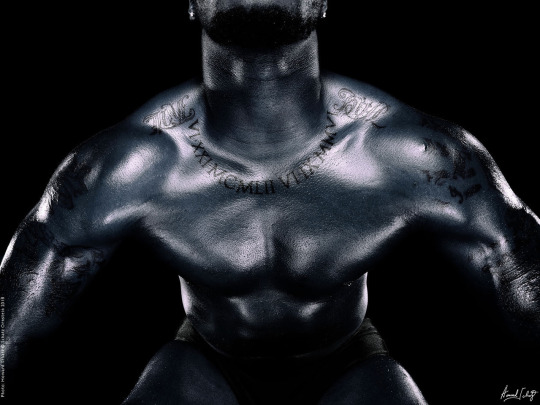


5 notes
·
View notes
Text
On Seeing, A Journal. #279 Above and Beyond: Indra Nooyi, CEO, Pepsico November 6th, 2018
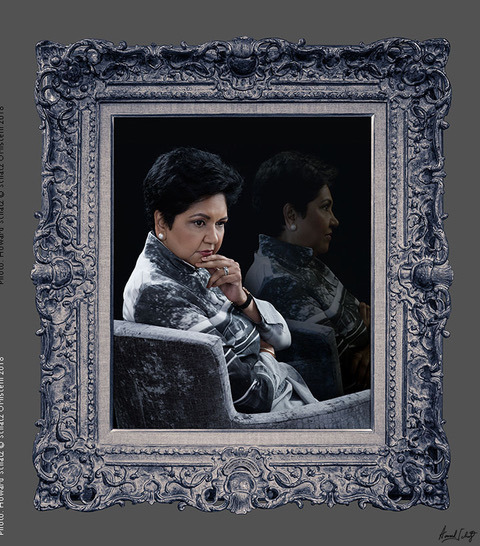
Indra Nooyi is consistently ranked among the world’s 100 most powerful women. She served as chairman of PepsiCo, the global food and beverage giant, and for 12 years, between 2006 an 2018, was that company’s CEO. When I was looking for exceptional people for my “Above and Beyond” project, she was an obvious choice.
Nooyi is an immigrant from India who received bachelor’s degrees in Physics, Chemistry and Mathematics from the University of Madras in 1974, and a graduate degree from Indian Institute of Management in Calcutta in 1976. In 1978 she was admitted to the Yale School of Management, where she earned a master's degree in public and private management in 1980.
After joining PepsiCo in 1994 she was named CFO in 2001, and then president and CEO in 2006. She left these positions in August of this year.

HS: You're an immigrant. You brought to this country treasures, the treasures of your intellect, your skill, your ability to work hard. You’ve had a meaningful effect on the lives of tens of thousands of people. I wonder how you feel about our current issues with immigration.
IN: I came into the country in 1978, and I came in legally. I was a skilled immigrant and I followed the rules. I enjoyed all the benefits that this country gave me in terms of welcoming immigrants, celebrating them, the meritocracy that the country was. So I'm an immigrant, a product of a well-established system. I think today we have both kinds of immigrants. We have those skilled immigrants, then we have people fleeing persecution.
HS: If you were the President of the United States what would you do about immigration?
IN: I would have to sit down and have a bipartisan group talking about what should be an immigration framework going forward and not have any sort of hard opinions right now. I’d really want to debate the best way to handle people fleeing persecution. People just coming into the country because it’s the land of opportunity, versus the need for certain skilled people because we need to have a country that’s encouraging of innovation, welcomes people who can advance the agenda of the country.
HS: You’ve made a comment, "Companies don’t run on spreadsheets." Can you explain?
That’s not the way you look at a company. It's not looking at a certain index or a certain relative number and then saying this is what your numbers should be. It's really understanding what the company is trying to do. As sales go up, for example, let's say our sales went up from $35 billion to $60 billion over eight or ten years; R&D as a percentage of sales might actually come down, even though the dollar amount goes up significantly.
So I think behind every number there's a story, and very often people look at it as a two dimensional model when there's really three and four dimensions to understand the complexity of a corporation and all the levels that have to be tweaked. The spreadsheet is a starting point, but it is not the end of the story, and that’s my biggest concern with the way companies are analyzed today.

HS: Business decisions are, in a way, educated gambles. I look at courage as not the absence of fear, but the capacity to act despite our fears. You have to make decisions based on your ability to predict the future as accurately as you possibly can, but nobody can predict the future.
There are CEOs who have made informed decisions that have ruined companies. How do you make big decisions knowing that there are negative consequences that can occur that you hadn't counted on?
IN: As a CEO, you're making decisions multiple times a day, or ratifying somebody’s decision. And you’re always betting the company's dollars when you make a decision. Typically, you do your data analysis, get all the data, look at it and make a decision. I actually think looking at the data is just one part of decision making.
Decision making is part data, part walking around and getting a gut feel for the market, for the consumer. Then it's instinct; sometimes the data says one thing, but your instincts scream something different, and how you tumble all these three, along with the company’s ability to implement. You put the four together, you then make a decision, and you do that so many times you sort of develop a sixth sense.
Now, will you make mistakes? Absolutely. What you hope for is that your hit rate improves over time. That’s the best you can do. You know, as a new CEO your hit rate may be a little bit better than 50. As you become a seasoned CEO, the hope is that you’ve been through the tough processes multiple times, and your hit rate starts to go up to 70 or 80. If your hit rate is always 100, then you’re really not taking chances. You’ve got to give yourself some room for error and failure.
HS: Do you have to develop a hard edge for the decisions that don’t work out? Do you have to have a thicker skin?
IN: Externally, yes. You know, when you’re in front of everybody else you do have to have a thick skin, and you’ve got to make the decisions that may not work out. But when you shut the door and sit in your office, I think most CEOs have a thin skin. I do. I shut the door and then I agonize over decisions that didn't pan out, because nobody wants to bet the company’s money on something that didn't work out. But externally you say, okay, guys, we gave it a good shot, it didn’t work, let’s move on.
HS: You seem to have a genius for not having emotions that affect the result of your instinct, that your instinct seems to be rather crystal clear.
IN: I wish I could feel that way. Instinct is not something that is just touchy feely. Instinct is also something that you should be able to rationalize, because when you feel something, you can't just say I feel this, therefore, let me go do it.
You marry your instincts with data and observation. You’re rolling the dice on a lot of dollars, so the instinct that you have is based on past experiences, reliving past failures, all of that together creates a gut and a fear inside you that you want to tap into as a positive force, rather than a negative force that holds you back.
What happens is every time I have to use my instinct to make a decision, I have to justify it to a lot of people, because sometimes people come to me and say, Here's the data, this is what it shows, we've got to do this. And I say, you know what, it doesn’t feel right, let me tell you why it doesn't feel right. Then I have to talk about disparate experiences and observations, and why together they create a fear in the pit of my stomach, and why I think we ought not to go that way.

HS: You’ve been the CEO of PepsiCo for 12 years.
How have you changed?
IN: I’ve matured in so many dimensions. I have a bigger experience base when it comes to assessing people.
I’ve now got a wider-angle lens on the world, on different companies, on different industries. And over time I just have more data and more data points that I can draw from and I can connect. There are more people I can call. There are more failures I can draw from, more successes I can draw from. I think, really, what’s happened is over time I find myself drawing on a lot of those experiences a lot more.
Now, the worst thing I can do is to say we tried this ten years ago, so we’re not going to try it. That’s the worst thing anybody can do, so I’m trying my best not to do that. If somebody comes to me with an idea that we tried ten years ago and it didn’t work, but they want to try it again, I say, good, let’s give it a shot. Let’s talk through why it didn’t work then, why we think it’s going to work now. You know, what’s changed in the world? What’s changed in consumer taste?
HS: I've heard a few times that CEOs are “powerless."
IN: Interestingly people think CEOs are all powerful, they just have to make a decision and go for it and the whole organization follows. Not true. You’ve got to make a decision. You’ve got to declare the decision, then you've got to work the organization, top to bottom, to sell it.
HS: Another quote that I love very much, "Business cannot exist independent from society."
IN: Very true. That’s something that I feel very strongly about. You know, businesses are large entities that employ people and change societies in many ways.
Every company operates within a country, a community and employs a lot of people who are mothers, fathers, brothers, sisters, aunts, uncles. We have to recognize that we have to be a positive force in every society.
We have to make sure that all the employees that come to work for us in the company feel great about coming to work, so that they bring their whole self to work. And the only way they’ll do it is because they can go home and say, I work for a company that’s doing something good for society.

HS: Do you think being a woman is behind that idea? Because women tend to be caregivers, and you're caring about society and how your company affects it and is affected in it?
IN: I don’t know if it's a female/male issue alone or it's because I was born in an emerging market where I saw both the benefits and the negatives of big companies on society. And informed by my travels around the world, where I watched how people interacted with products. I think I was more informed by an incredible world view, perhaps tempered with some emotion. I think the people side might have been more tempered with my emotion, which may have been driven by the fact that I'm a woman, I don’t know. I don’t know what it's like to be a man, so from my perspective, this is all I know.
HS: You gave a talk at UCLA and you learned about the school’s great basketball coach John Wooden, who spoke about "leading a better life." How do you lead a better life?
IN: My first responsibility is to my family. My daughters, 33 and 35. My husband, my mother, who is alive, my extended family, my first responsibility is to them because I'm the only mum they have, I'm the only wife my husband has. We've been married 38 years. I try to be a better mum and a better wife and a better daughter all the time. I’m not sure I’m successful, but I try my best. But my CEO job is an awesome responsibility and it consumes you. Even though I say my family comes first, the CEO job absolutely consumes you.
HS: What is your future?

IN: I don’t know. I know I want to do something different. I want to advance this whole discussion about how do we create a society where we allow people to have a life and make a living. What kind of protections do we need to give them? What does society have to do for them? What do governments have to do? What do companies have to do? I'd like to develop a framework and talk about it in a sensible way, not just talk about the problem, but talk about sensible solutions.
#indra nooyi#howard schatz#interview#aboveandbeyond#photography#portrait#women#womenleaders#powerwomen
2 notes
·
View notes
Text
On Seeing, A Journal. #278 Andrew Moore, "Dirt Meridian,” a book review.
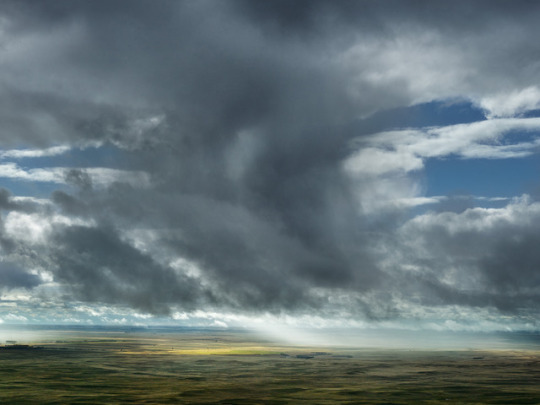
Sun Through Rain. ©Andrew Moore
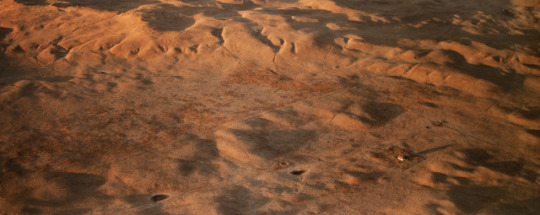
Schoolhouse, China Pasture. ©Andrew Moore
I receive, daily, the internationally informative photography news site

The Eye of Photography from the former editor-in-chief of French Photo Magazine and now editor-in-chief of The Eye of Photography, Jean-Jacques Naudet. This daily posting is phenomenally valuable, covering all sorts of photography events, portfolios of photographers throughout the world, gallery shows, museum exhibitions, etc.
The site is free, though as an aside they can use financial help for their service. Apart from having contributed features from time to time, I have no affiliation with them, I’m only interested in seeing the on-going success of something that publishes so much information and imagery every day.
Other important sources include AtEdge and Graphis.
Each of these open up to a wide world of brilliant photographers, designers, and other creatives.
A recent post contained an article about the The Yancy Richardson Gallery in New York City. The images of Andrew Moore who is represented by the gallery particularly caught my eye. I went to his site ((http://www.andrewlmoore.com)) and was so moved by his body of work that I bought his recent book,
"Dirt Meridian.”
I do that, buy and collect photography books. Along with the internet, books are my major source of self-education. I am well aware that if I am to grow in this visual art, it’s imperative that I study, continually, tenaciously. It’s essential to gain, maintain and expand a vast visual data bank if one desires to create unique, original and exciting work. For photography, one needs to look, study, and look even more, reviewing and surveying everything available in galleries, web sites, periodicals, museums, presentations and, yes, books. Our brains are such that images drop out; constant replenishment is needed for any sort of positive development, success, and even survival in this challenging art. It’s essential to recognize what’s been done before in order to avoid repetition. Knowing what hasn’t been done, or done well enough, comes when one has seen – and keeps seeing -- a vast range of imagery.
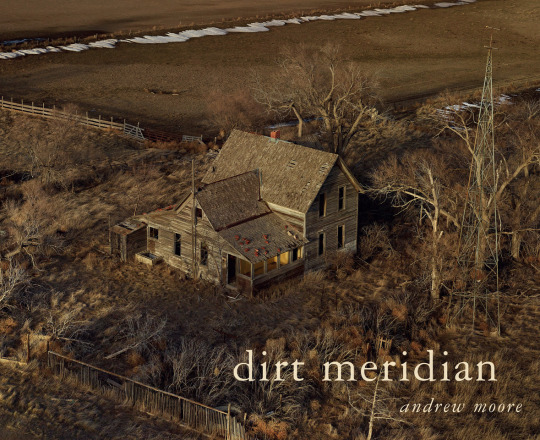
When “Dirt Meridian” arrived, I opened it and couldn’t put it down, studying every image. And, as I always do with a new book of photographs, I left it out, opened, on a counter I pass daily, so that I could look at it again and again and imprint the images in my memory.
This is not the kind of photography I endeavor to create in the controlled environment of a studio (or a pool, my particular kind of studio). Moore’s work is done outdoors, in this case in the vast, almost empty space of the great plains of middle America. What he shows us are sand hills and sky and weather and cattle. And the Badlands and old abandoned barns and buffalo and meadows and creeks, windmills and wildlife. He also shows the determined struggle of the human spirit against the toughest elements, and the effect of those on deserted homesteads.
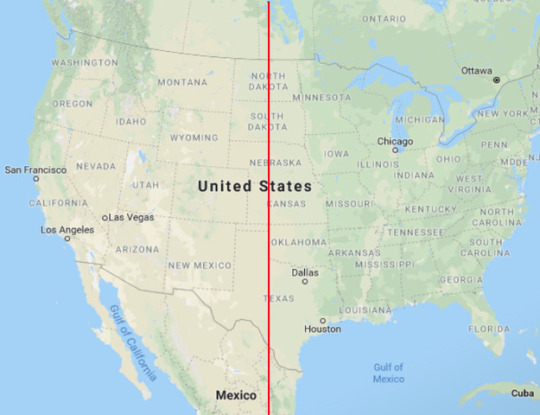
America, its 100th meridian.
Moore’s epic visions of the vast treeless space in the 100th meridian, cutting through North and South Dakota, Nebraska, Kansas, Oklahoma, and Texas, are all about space -- empty sprawling and seemingly infinite space. The images are intoxicating, filled with magnificent beauty in the loneliness that is the trackless expanse of seemingly endless land. From his Acknowledgement: “…the land’s beauty lies in its vast and sublime emptiness."
I wrote to Moore and learned, happily, that his NYC studio/office is located only a few blocks from mine. So, I invited him for lunch and an in-person review of his magnificent photographs.
Working on this book project, he spent weeks at a time on many trips from the East, met many individuals and recorded their stories, histories, lives. Each photograph is accompanied by text containing fascinating information which provides a rich understanding of the work.
Moore made many of the photographs from a Cessna 180 single-engine plane flown by Doug Dean. They attached his medium format digital camera to one of the plane’s wing struts, using a screen and remote control from the passenger seat.
They flew low, yielding a unique perspective. This technique is one important reason why the images look so different from photographs of this area I’ve seen before. He spoke of the emptiness as a spiritual reservoir, a spiritual landscape. He wrote in the Acknowledgements, “the intimate seemed conjoined to the infinite."
During the project he moved from north to south, contrasting open spaces with cluttered, claustrophobic interiors, rich with poor, immigrants and native born, industrial scenes with mythic landscapes, all of which he explained was a metaphor for the sense of possibility, of hope that tomorrow will be a better day.
In the book his pilot wrote, “I hope you take pause, if only for a moment, to consider the story of this land, where second chances are few, and how the decisions we make today will impact the generations to follow."
Moore allowed me to choose images I personally wished to use for this review.
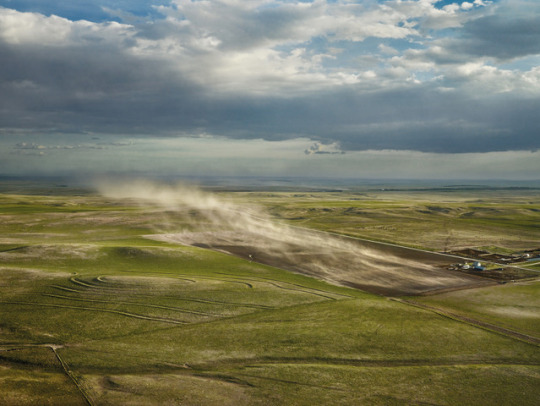
Storm Blow. ©Andrew Moore
From the book: “Sheridan County, Nebraska. These dry, fallow lands and terraces lie to the southeast of Clinton. The wind coming out of the north was blowing at over 70 mph. When choosing the angle approach to a subject, Doug Dean piloted us, if possible, into a headwind, since that slowed the plane down and allowed a bit more time for picture making. On this day we had little choice but to let a powerful tailwind take us on a Nantucket sleigh ride if we wanted to catch this billowing cloud of white dirt."
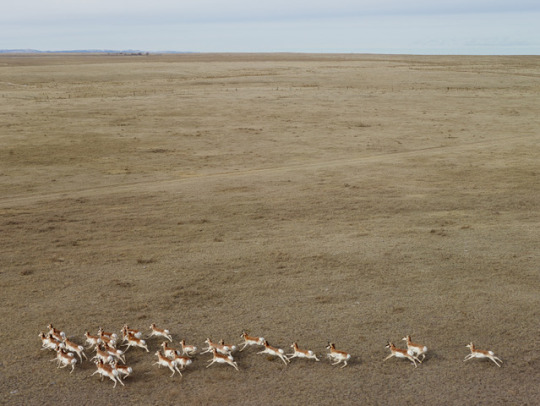
Pronghorn Antelope. ©Andrew Moore
From the book: “A herd of the wild antelope, which in wintertime can number into the hundreds, roams the high plains that stretch toward the Big Horn Mountains in the background. Early pioneer cattlemen noticed that the native grass animals roaming this area tasted particularly good, and to this day Niobrara County grass has become famous among livestock buyers for the finish it gives cattle.”
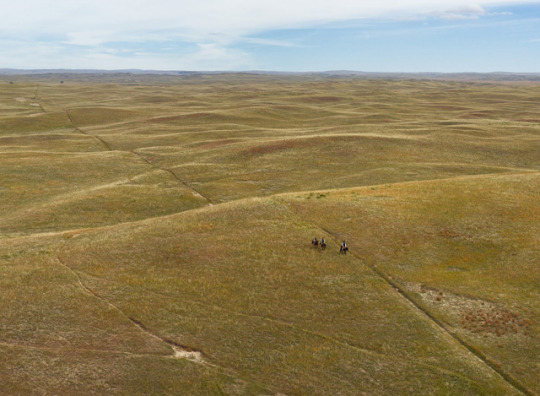
Riding Fence. ©Andrew Moore
From the book: “Sheridan County, Nebraska, 2013. Heidi and Brock Terrell and their son Royal (led by their red heeler) ride fence along their land in Sheridan County. They not only raise both cattle and sheep but they also farm soybeans and sugar beets. Heidi is a sixth generation descendant of Jules Sandoz, among the earliest homesteaders in the area. Better known as ‘Old Jules,’ legendary for his cussedness and his justly famous tenacity, he was immortalized in the biography of the same name written in 1935 by daughter Mari Sandoz.”
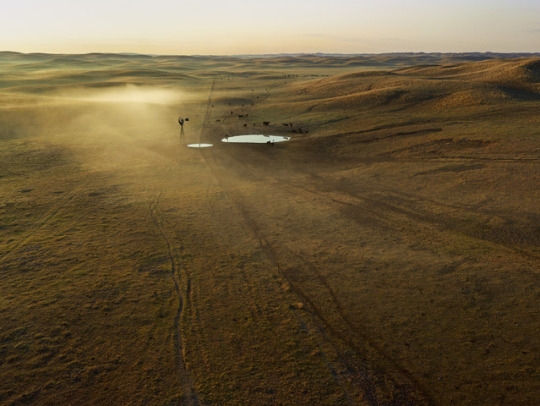
First Light. ©Andrew Moore
From the book: "Cherry County, Nebraska, 2013. Cattle and heron share a drink at the tank in the residual morning fog. Much of the success of cattle ranching in the Sandhills is due to the shallow reach down to the Ogallala Aquifer. In some places it's only six feet to water, so one can easily and cheaply put down a windmill in order to water livestock anywhere in the vastness of this terrain. (There are many sub-irrigated meadows that provide hay at the driest times.) The hilly landscape provides the herd with protection from the wind and snow. However, the quality of the grass is not as good as on hard soil land, so it can still take 20 to 30 acres to support just one cow/calf pair."

Round Up Number 2. ©Andrew Moore
From the book: “McKenzie County, North Dakota, 2005. Branding day at the Hepper Ranch outside the town of Keene. In the shadows of the Blue Buttes, amidst lush May grass, family, friends, and neighbors (and several dogs) help round up this herd of 300 cow/calf pairs. The large crew included five heelers, six sets of floppers, branders, vaccinators, and iron tenders. The older more experienced cowboys do the actual branding while the younger folks who wrestle the calves are known as floppers.”
In the book’s introduction, Kent Haruf wrote, “These are wonderful photographs, clear, and evocative, unsentimental, they seem to understand the sacredness of the country. They suggest its holiness."
Howard Schatz, November, 2018.
254 notes
·
View notes
Text
On Seeing, A Journal. #277 Above and Beyond, Matthew Carter. October 23rd, 2018

I feel safe in saying that all of the viewers of this journal have read the work of my latest “Above and Beyond” subject. Matthew Carter is not a writer, however; he is a type designer who is without a doubt the most famous creator of print and digital fonts in the world of modern media.
Honored with a MacArthur “genius” Award in 2010, Carter has designed dozens of type faces that are by now ubiquitous. In fact, a 2005 New Yorker profile described him as “the most widely read man in the world,” considering the amount of text set in his commonly used fonts.
Most readers, myself included, tend to take typefaces for granted. Until we have to make choices. A magazine editor friend of mine told me that when he was starting a new magazine and his art director announced that he had to choose the type, he spent the next several days studying fonts and falling in love with one after the other. I have had the same experience choosing type for my books. The emotional response to how letters are formed may be subtle, but it is undeniable.
Among the most utilized of Carter’s many typefaces are the classic web fonts Verdana and Georgia, and the Windows interface font,Tahoma. His other well known designs include Bell Centennial, which he developed initially to be legible in telephone directories, even when printed on flimsy paper at small sizes.
Carter has won numerous awards for his contributions to typography and design, including a Doctorate of Humane Letters from the Art Institute of Boston, an AIGA medal in 1995, the TDC Medal from the Type Directors Club in 1997, and the 2005 SOTA (The Society of Typographic Aficionados) Typography Award. A retrospective of his work, "Typographically Speaking, The Art of Matthew Carter," was exhibited at the University of Maryland, Baltimore County in December 2002.
Besides Carter's commercially released fonts, many of his designs have been privately commissioned for companies for their own use. These include work for Le Monde, the New York Times, Time, The Washington Post, the Boston Globe, Wired, and Newsweek.
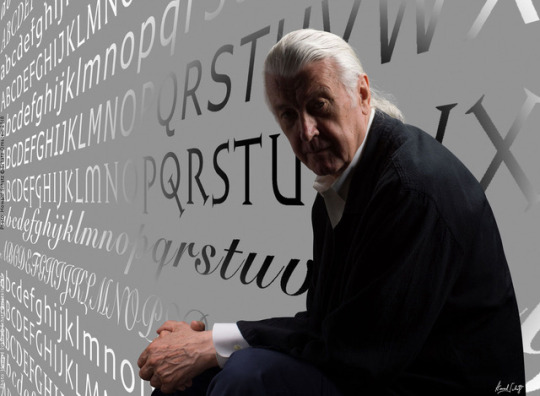
HS: How do you design a new font?
MC: I always start with the same sequence of letters. Always do the lower case before the capitals. I generally start with the lower case “h,” followed by “o,” followed by “p.”
The reason being, “h” is a straight-sided letter, more or less, with a descending stroke and also an x-height stroke. “o” is round, of course. “p” is sort of half of one and half of the other, and it has a descending stroke. So I’ve got a lot of the metrics in just those three letters. It’s like a sort of DNA.
I can look at those together, how they relate. Very basic things, does it have serifs or is it sans serif, what’s the thick/thin ratio, all those things can be studied just with those three basic letters.
If you’ve got an h, you’ve got a lot of information about m and n and u. If you’ve got a p, you’ve got b, d, q and so on. So, you can extrapolate from one form and build more from that.
After h-o-p, I probably do an oblique letter like v, because that’s another condition. I tend to work a lot on a small subset of the alphabet. Maybe half a dozen letters. And it’s only when you’re fairly confident about them—their forms and their spacing—that you do start to build it out.
A lot of people think that you start with the most interesting letters.
The Baskerville G has a gap in the bottom loop, so it’s easy to identify.

Or my Miller Banner Italic Q which has a nice curly tail.

But those are the last letters I do. They’re capricious. They don’t tell you anything about other letters.
People say what a difference the computer made to type design. Well, it’s true, but the real difference was the coming of the laser printer. As soon as possible I like to print a text. I have one or two kind of funny texts that only use about 12 letters of the alphabet. But I can print those out and get a much better sense of the texture of what a font is going to be.
I tell students that the most important period in the development of a new typeface occurs between when you first think it’s finished, and when it’s actually finished. Because you can see a proof, and you can say, that looks pretty good. I can read it. But at the same time, if you’re honest with yourself, you say, I’m not quite sure this is right. What happens if I change this, or I change that? No, that makes it worse. So you make changes to see what happens…and so on.
You go through a period that requires a lot of patience and perseverance, where you are really sort of testing yourself, to see whether this really is finished. And there is a point where you have to satisfy yourself that this thing is as good as it can be.
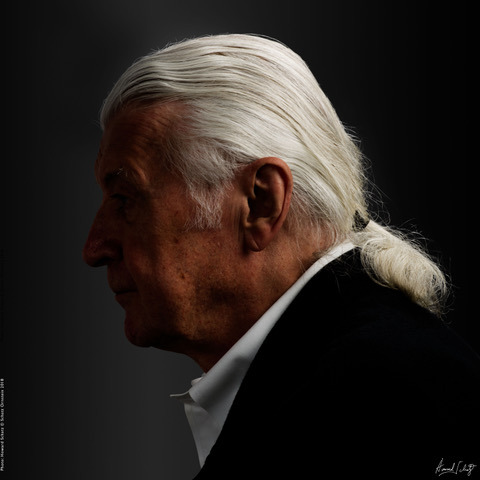
HS: What are the emotional factors deciding between something simple as serif versus non-serif?
MC: This is a question a lot of people have studied: The emotional content of typefaces. I’m hopeless at this. I don’t see it. People get an emotional investment in typefaces. Maybe only at a subliminal level, but they do.
If somebody said to me, we want you to design a typeface that would be very welcomed by…I don't know, teenage girls, or 80-year-old men, I wouldn’t know what to do. I very rarely have subjective feelings about a typeface… this is a great typeface, or a terrible typeface, and so on. Because for me, it’s all dependent on what it was supposed to do, and does it do it.
And you know, type designers, we’re at the bottom of the food chain. We’re hostages to typographers, to graphic designers, art directors, everyone up the ladder. And we can’t police that; we can’t pick up a book and say, oh, you know, this is set in Times Roman, it should have been set in Baskerville. Go change it. You can’t police the use of typefaces. Not in the retail market.
So, the only thing I can say is, where my own work is concerned, it’s very nice when you see one of your faces used well. It’s gratifying.
But it’s also very interesting to see it misused. Because sometimes you learn things. You learn more from seeing a typeface of your own in a situation that you would never have anticipated, never would have used yourself.

I had asked Matthew Carter to send me a number of his fonts.
He generously obliged. I put them to “work” creating his portraits.
2 notes
·
View notes
Text
On Seeing: A Journal #276 Bodies of the NFL: Dalvin Tomlinson. October 16th, 2018

Four, of eleven, on the Defensive team so far.
My project to see under the football armor adds more (and more formidable) pro players every week. I was happy recently to welcome to my studio Dalvin Tomlinson, a defensive tackle for the New York Giants. He is the fourth defensive player I’ve photographed in 2018, and as my “squad” fills out,
I feel I’m beginning to tell the story of the physicality needed for modern professional football.

Military historians have long believed that World War I was finally won by English and American superiority in tanks, a then-new weapon impervious to the machine guns that had stopped hundreds of assaults. Football’s defensive linemen serve the same function, using sheer physical force to break through the offensive line and stop runners or take down quarterbacks. To do what they have to do, these men are the most powerful in the game, and Tomlinson is a prime example.
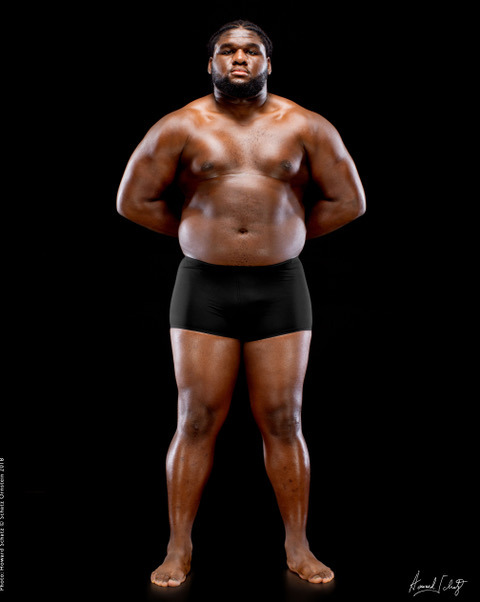
He is 6’3” and weighs 317 lbs. In a very real sense, a giant of a man, but capable of onrushing speed that might be more typical of a smaller man. He is one of the reasons that quarterbacks intentionally throw a pass out of bounds – the football equivalent of “I surrender.”
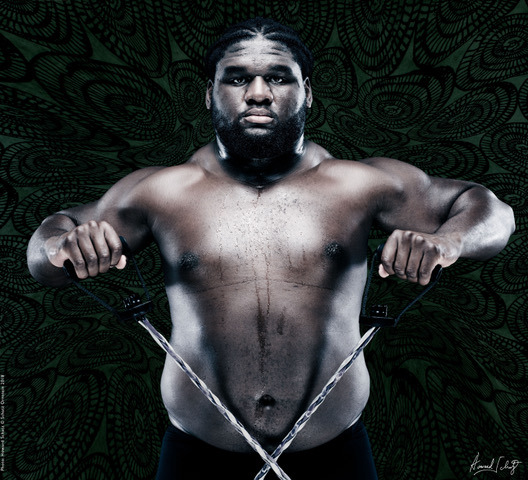
I followed a similar pattern with Tomlinson as with the other players who have participated in the project. Readers of this journal will be familiar with my approach by now: a standing picture, a full body study, a photograph in action and then portraiture. His agent is Julia Lauria.

Rush ready.

Mr. Quarterback, throw a pass over this!

With Giselle Devot; together since middle school in Alabama.
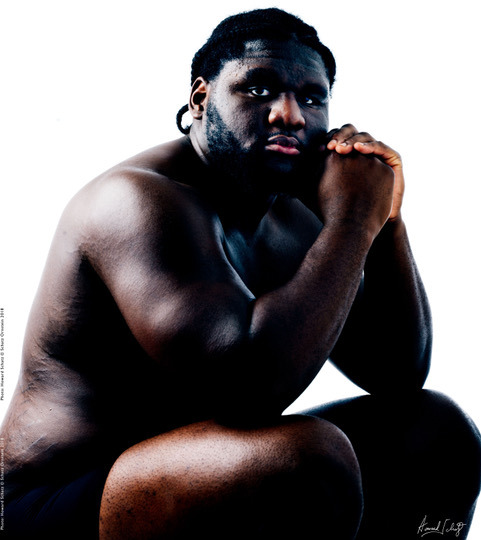
The portrait.
2 notes
·
View notes
Text
On Seeing: A Journal #275 Bodies of the NFL: Damarious Randall. October 9th, 2018

A safety takes aim at a pass receiver.
Damarious Randall (born August 29, 1992).
He is 5’ 11" and weighs 196 lb.
Randall played cornerback, safety and wide receiver, and also returned punts and kickoffs at Pensacola High School in Florida, earning all-state recognition as a senior. An all-around athlete, he also lettered in baseball and track & field, long jumping almost 24 feet and running the 4x100 relay.
He played college football at Arizona State and was drafted by the Green Bay Packers in the first round of the 2015 NFL draft. In 2018, he was traded to the Browns, and now plays safety in Cleveland.
In order to watch the quarterback throw a football to a receiver and, at the same time, guard the receiver, defensive backs seem to be able to run sideways and backwards as fast as forward.
Also a defensive safety might be considered a designated punisher, since he can often deliver thundering blows to pass receivers in an effort to dislodge a just-caught ball. This requires a particular combination of speed, power, and sheer ferocity.
Randall recently came to the studio to participate in my ongoing project:
“The Bodies of the NFL.”

As is my usual approach, I did one “Standing” photograph.
Here are the defensive positions I’ve photographed so far with this project.

What followed was a series of studies of Randall’s impressive physical structure:
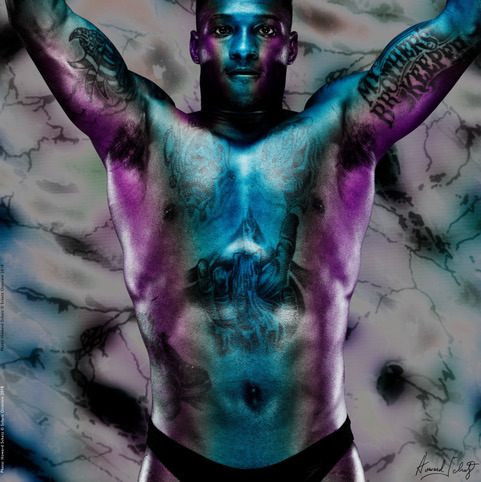

HS directing use of spring-loaded resistance bands to enhance muscle contraction.
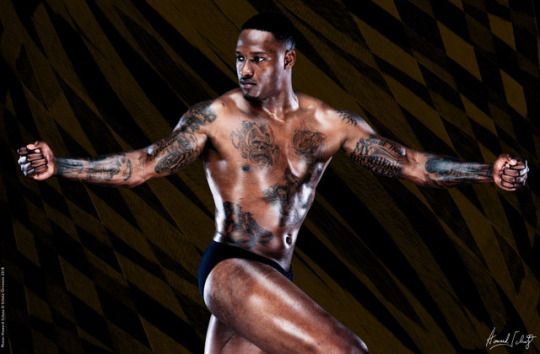

Randall, his agent Jamie Mullen (who works with the agent Jonathan Perzley) and I looking over images.

Finally, a portrait for his family…

…and one for the project.
#damarious randall#nfl#football#cleveland#cleveland browns#athlete#physique#sports#portrait#howardschatz
2 notes
·
View notes
Text
On Seeing: A Journal #274 Stopping Time: Underwater Video Shoot for Sony. October 2nd, 2018

Based on extensive work photographing dancers and models underwater, mostly for my books, I was commissioned to direct, shoot and edit a commercial for SONY.
In my pre-shoot presentation to the advertising client, I suggested casting dancers, and putting them in bright, flowing costumes in crystal clear water to depict the clarity and color rendition of a fine television screen.
I put together a cast of six dancers I had worked with before and hired a talented stylist to create dresses, mostly using chiffon which flows so beautifully underwater. Then I had a large, 300-pound front-silvered mirror placed (carefully!) at the bottom of the pool to reflect the dancers as they moved across it, as if it were a television screen. The silver reflective coating on a mirror is always placed behind the glass. Photographing the reflections in such mirrors will, subtly by surely, reveal the “ghost" of the glass. I had a mirror made with the reflective covering painted on top of the glass resulting in a perfectly clear, pristine image.
I wanted the dancers to look as if they were flowers blown by a breeze; I needed them to move across the glass. But having them swim across would not have been graceful. This is how I solved the problem: their movement was accomplished by having one of my assistants, off camera and underwater, pull each dancer, under my direction, with a thin, black cord (invisible against the black background). My models, being professional dancers, knew exactly what I was after, and their movements and the reflections were perfect.
youtube
This is a shortened version of the longer commercial.
The shoot went so smoothly, and the dancers looked so alluring and beautiful that I had time, afterwards to repeat the movement and capture the moments in photographs. Here are a few of the images that were created, almost as a happy afterthought.



5 notes
·
View notes
Text
On Seeing, A Journal. #273 Above and Beyond with Daniel Boulud. September 25th, 2018
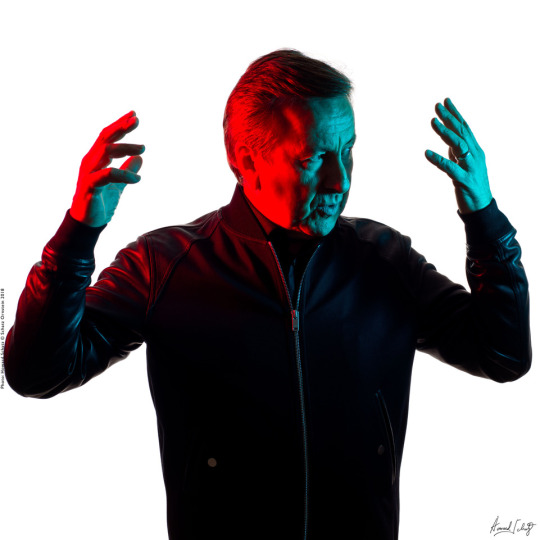
In my ongoing search for greatness for my project "Above and Beyond," I invited the master French chef Daniel Boulud to come to the studio for photos and an interview. Creativity has no boundaries, and can be found in the kitchen as well as on the stage, in the pages of a book, or on a canvas. Boulud, 62, is the owner of 15 restaurants, five in New York and is the author of eight books, including “Letters to a Young Chef.”
Raised on a farm outside of Lyon, France, and trained by renowned French chefs, Boulud made his reputation in New York, first as a chef and most recently as a restaurateur. His company, The Dinex Group, currently includes his restaurants and gourmet groceries (Epicerie Boulud) and Feast & Fêtes Catering. His restaurants include Daniel, Café Boulud, and Boulud Sud.
Not long after opening, restaurant Daniel was rated one of the top ten restaurants in the world by the International Herald Tribune. Boulud, 1992 winner of the James Beard Award for New York City’s Best Chef, the Beard Foundation also named him Outstanding Restaurateur for his restaurant, Daniel.
In 2006, the President of France made Boulud a Chevalier de la Légion d'Honneur in recognition of his contribution to the advancement of French culture.
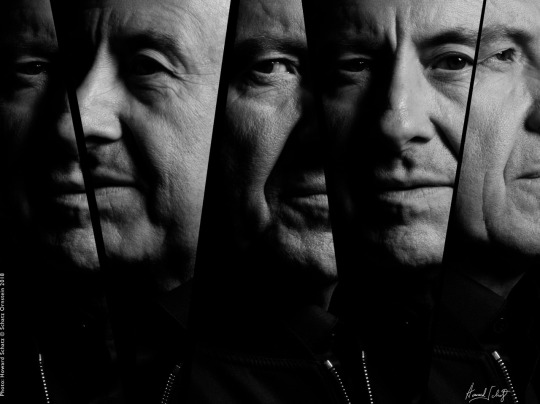
I sat down with Boulud in my studio for an interview.
HS: How do you invent a new dish? What are the steps to coming up with something that hasn’t been done before, or is different from that which has been done before?
DB: An invention or the creation of a dish depends on the time in my life. Sometimes, it is very spontaneous; something that just drove me to make this combination. It could be the season. It could be the ingredient. It could be a technique, a seasoning, or even the place where I am. It could be who I am cooking for.
Creating a new dish is not like creating a piece of art where you're only going to make one piece then move on to your next one. Creating a dish is maybe to put it on the menu, and it’s to keep it for maybe a month, two months, three months, a year. Forever, if it becomes a classic.
HS: When you create a dish, do you take notes so that it’s more regulated, almost scientific?
DB: Not...exactly. My approach is usually more natural and very spontaneous. Although it could be something calculated, and you are trying to calculate the technique, the ingredients, the sources of the ingredients, and the consistency of the sourcing. And also the taste, the texture, then the presentation. Some dishes require teamwork as well. In the kitchen we work as a team. We sit down and talk. We exchange ideas.

DB, preparing a dish of radishes, salt and butter. Installation on 6th Ave, NYC.
HS: Can you taste something and understand what needs to be changed in order to improve the final result?
DB: Yes, often. It definitely could be the case of tasting a dish, and start to create a slight modifier, or expanding on one flavor more, or a seasoning, or reducing an acidity.
Because there are different ways of creating a dish. Are you creating a dish for a small burst of flavor or a powerful concentration of something? Or are you creating a dish to enjoy over 15, 20 minutes. You discover flavor as you go, you discover texture, you discover taste, and you see a better harmony of things. I think a dish should be a journey. At the restaurant Daniel, for example, we try to renew ourselves all the time.
HS: How do you maintain control? You have many restaurants and many employees, the maître d’s, the waiters, and then the cooking staff. How do you continue the finesse and perfection that are so essential to your work?
DB: It’s the hardest thing. We train our staff very well. We want them to feel that they work for someone they feel proud to represent. They feel that sense of pride. The sense of career and... I hope they feel inspired by what I have done, who I am, and what I have created for my customer.
Many of the staff are very, very young, and they are inexperienced but extremely motivated to learn, to do well, to be an asset. And I think, for me, that’s more rewarding than someone who has too much knowledge and wants to do it his way.
So, we depend on a lot of young people, and we have a lot of success. It’s quite a big family. In New York, I have 250 chefs and cooks working for me.
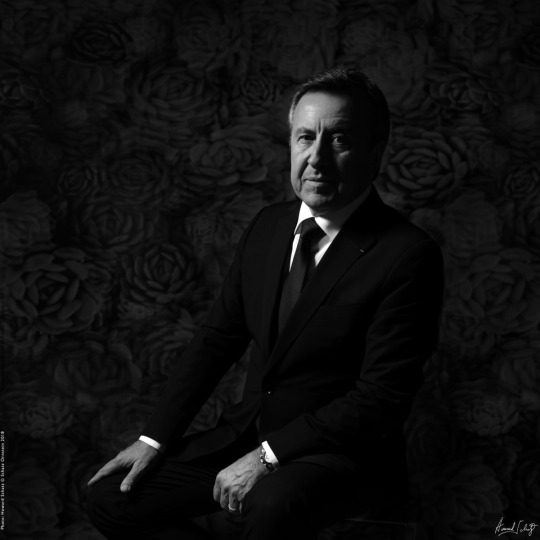
HS: About competition; you share recipes, readily. You're allowing your recipes out in the world for others to use. Yes, somebody who cooks at home, they use your recipe, that's no particular threat to your business. But you're also informing other restaurants and other chefs.
Also you've trained some people who’ve learned very well, and they go on and they open their own restaurants. Your children are out there competing with you. The sense of real generosity and openness that you appear to have is quite a remarkable thing.
DB: Yes. Well, I will say, first, the world of cooking has expanded so much. Fifty years ago, in New York City, the chefs kept their recipes almost as a secret. They did not share technique or preparation.
Today, I think we have to be able to share everything, to continue to teach, but continue to create and continue to be different from others. And so, today, you can take ten of the best restaurants in New York, they're very different, even if they think the same way, they work the same way, they believe in the same standard.
HS: What about chefs that leave you and open their own restaurants and use all your secrets? They know all your techniques, they know all your methods.
DB: I have trained countless young chefs. And some of them leave, and some of them I invest with. I say: "Okay, I want to invest with you because I love you, and I understand you gave a good time of your life with me, and now it’s time for you to do your own." And, I trust them.
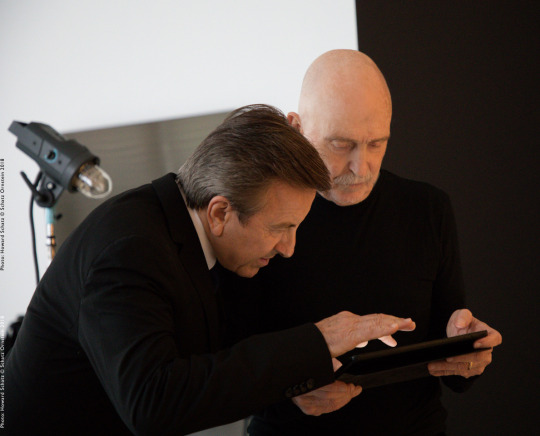
DB, HS looking at images. Details matter, in his field and mine.
HS: About noise in restaurants; it’s sometimes so hard to have a conversation over the music, over the noise, over the boisterous atmosphere.
DB: A restaurant is doing well if there is noise. If there is no noise, there is no customer. The customer is drinking well. So, the more they drink, the more they make noise. I love a lively restaurant, it’s just a question of spacing and comfort. So, Restaurant Daniel, for example, we have always a good buzz. But if you are a table of four, you can still have a conversation without having to overpower the noise of it.
And to me, that’s the good balance. If you are in a bistro and the tables are a little tighter together, and you happen to be between a table of six and a table of four, and you are just two people, it becomes annoying. It’s very difficult. So, we try to be...We try to have a little psychology of care to the customer. So, based on how many people there are and where we place them, then the noisy can be together and the less noisy can be left at peace.
HS: Has there been a Trump effect in your business?
DB: I think, yes, in tourism. I think we have less South Americans, less Europeans, less Asians coming on vacation. It may not be the case in other cities in America, but New York has always depended on huge travel and also very high-end travelers who come here for the food as well, not only just to be tourists.
So, we have felt it there. We didn't have too much problem with our staff because we already had taken a lot of initiative to make sure that they were all legal. But I've heard stories in restaurants who are losing staff because they got deported. And those restaurants got in trouble.
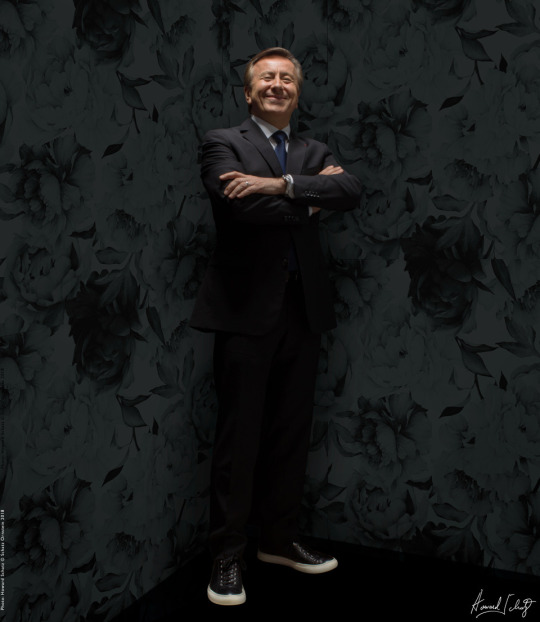
HS: How do you feel about critics?
DB: A critic is necessary, but I don't think it’s a fair review when a critic only comes twice in a year, or three times, and then doesn’t come back for five or six years.
We care, and we are very sensitive to Trip Advisor and Yelp, and all that. We care for the regular people who come. And they can be a critic, can have an opinion, can have an experience great or maybe disappointing. We are sensitive to that as well.
Yelp and others have not diminished the power of a critic, but they have definitely evened things out, a little bit, letting us have access to our public, be able to be in conversation with the consumer also. I think one should never be scared of a critic, but one should always be aware that there could be a critic any day, any time, in the restaurant.
I have been very blessed with the critics. And I've been frustrated with them, also, but it’s okay. I have been in New York, cooking now for 35 years. And I've seen ten food critics at the New York Times. And, I'm still standing.


The Chef and the Business man.
2 notes
·
View notes
Text
On Seeing: A Journal #272 MODERN/modern Dance: Vernard Gilmore. September 18th, 2018

The work I’ve done over many years photographing athletes and dancers could easily be seen as parallel projects, since athletes and dancers share so many characteristics and have lives full of very similar demands.
A fine example is dancer Vernard Gilmore, who came to my studio recently for my MODERN/modern Dance project. Gilmore has been with the Alvin Ailey Dance Company for 20 years. He is a beautiful dancer who blends physically powerful movement with a seemingly effortless grace.
After studying as a scholarship student at The Ailey School, Gilmore joined the company in 1997. In 2010, he performed at the White House Dance Series. In addition to his work as a dancer, Mr. Gilmore is a choreographer whose work has been a part of the Ailey Dancers Resource Fund, the Fire Island Dance Festival in 2008, and the Jazz Foundation of America Gala in 2010. Nimbus Dance Works will also perform a new work by Gilmore later this year. As a certified Zena Rommett Floor-Barre® instructor, He teaches workshops and master classes around the world.
We worked together to express through the camera his wonderful abilities. After our day of shooting, I decided to use some of the images to create sculptural forms.
I am fully aware that this idea has been explored by others, often very well, but I also know that any “borrowing" of an idea carries the possibility of discovering new and wonderful ways of seeing.



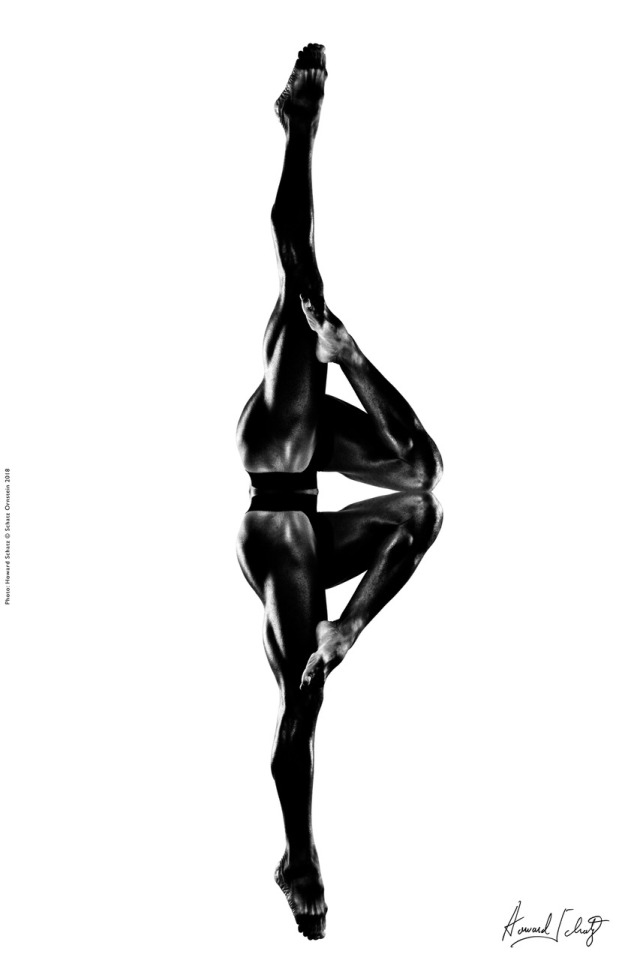
Vernard was marvelously inventive during this session; an ideal collaborator and excitingly original.

1 note
·
View note
Text
On Seeing: A Journal #271 Bodies of the NFL: Chris Conley - September 11th, 2018

Chris Conley, wide receiver, Kansas City Chiefs
A recent visitor to the studio was Chris Conley, an NFL wide receiver for the Kansas City Chiefs.
Wide receivers require great speed, balance, agility, "good hands," and enough bulk to take the thunderous hits of defensive backs. They run evasive “routes” to give quarterbacks open targets, and those routes, both pre-designed and improvised, with their quick cuts and speed changes, make wide receivers among the most exciting players in football (don’t tell quarterbacks I said so).

Conley, 25 years old, played college football at the University of Georgia and was drafted by the Chiefs in the third round in 2015. He grew up in a military family, and spent some of his early years at a U.S. airbase in Turkey. He was very poised, impressively self-confident and readily communicative. Conley is six foot three and weighs just over 200 pounds, with the perfect physique for the demands of his position and functions on a football field.
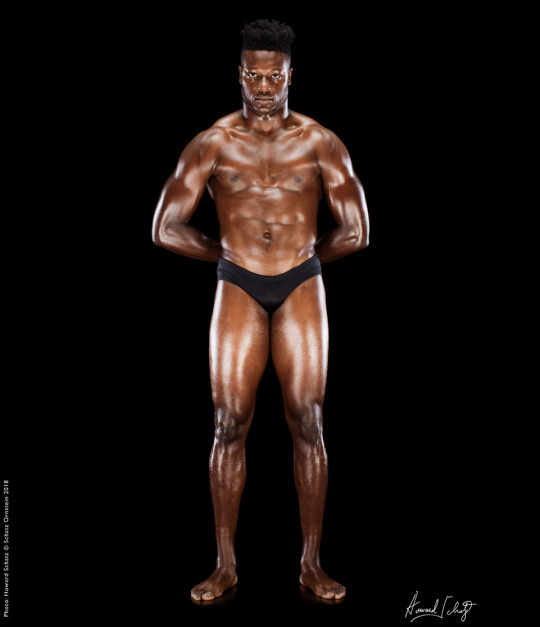
As I do with all the players I photograph, I worked to create to four different images: a “standing” image which demonstrates his physique, a photographic study of his musculature, a photograph showing movement, in this case, leaping to catch a pass (see below), and finally portraiture.


As I continue my project to reveal how particular body types fit into the specific requirements of specific football positions, I’m also studying the varying skills necessary to play those positions.
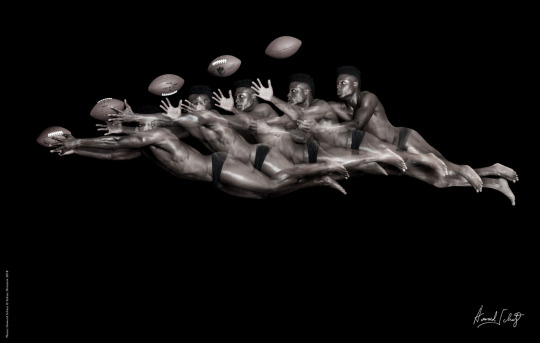
Movement—“flying“ to catch a pass
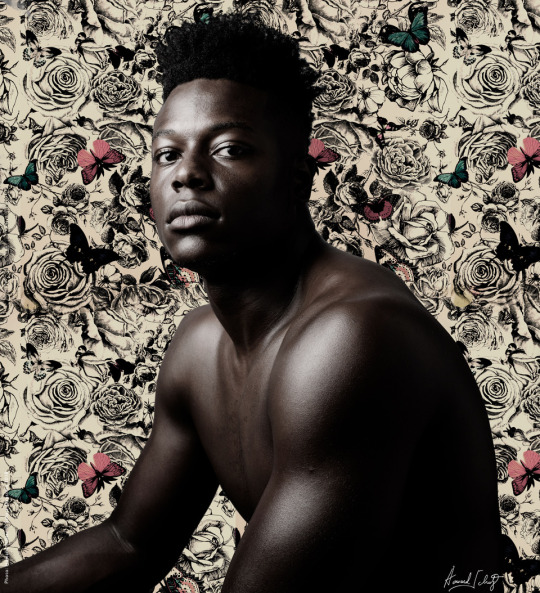
Portrait for this project.

Portrait for him, his family. I said, “Let’s make an image for those who love you.”
2 notes
·
View notes
Text
On Seeing: A Journal #270 Bodies of the NFL: Rashaan Evans, August 28th, 2018

I continue to invite National Football League players to the studio to get “under the armor,” revealing how their remarkable physiques make them uniquely suited to the positions they play. Alan Rashaan Evans is a linebacker for the Tennessee Titans, a former University of Alabama All-American who was a first round draft pick last year.
He is 6’ 3” and weighs 231 lbs.
Of all the defensive positions in football, linebackers have the most complex requirements: The strength of linemen and the quickness of pass defenders combined with rapid, lateral movement and extreme agility.
These requirements need a combination of muscularity and leanness, perfectly exemplified by Evans’s powerful form.
For our studio session, I did four things: I had him take both a standing pose and a “ready” position, as if moving from a reset between plays, prepared to take on a runner, sack a quarterback, or knock down a short pass. Then, I had him move as if a play were occurring and he had to change direction. Next, I did a study of his body with the help of his brother and a studio assistant Rob Weber. And, finally I made a pensive formal portrait.
The players who come to my studio really commit to working with me in what can be, in its own way, a demanding role requiring real cooperation between the athlete and photographer. Perhaps it’s the result of many years of being coached, that makes this project a happy and intriguing challenge for me, as well.

Standing.
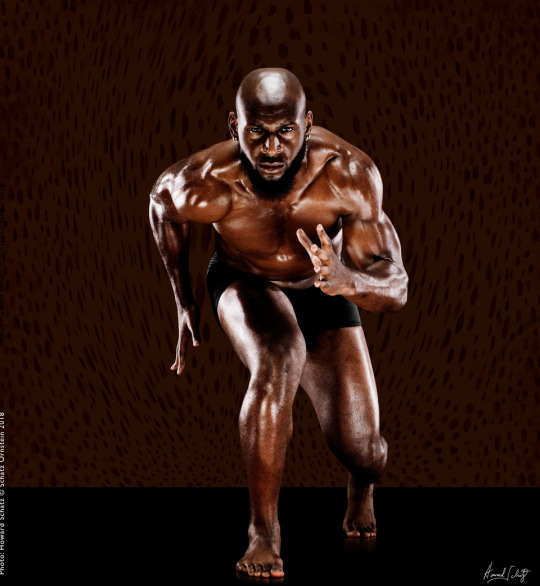
Ready.

Movement, changing direction as dictated by the offense and the football.

A study of muscularity, accomplished by having Evans pulling up on the bands while jumping.
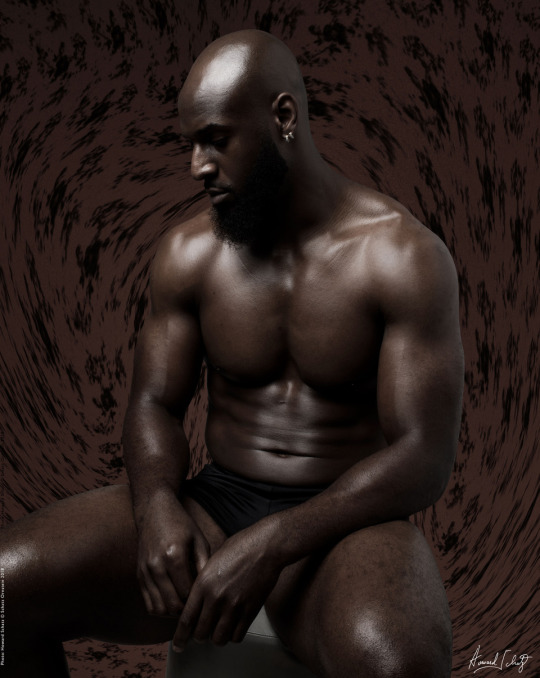
Portraiture.

Rashaan and his younger brother, Alex.
4 notes
·
View notes
Text
On Seeing, A Journal. #269 Above and Beyond with Carrie Mae Weems - August 21st, 2018

For my ongoing "Above and Beyond" portrait series of extraordinary people, I recently turned my lens to a woman who knows cameras well, though she came to photography by an interesting, winding route.
Before she began taking pictures professionally, she studied dance, worked as a union organizer, and spent time in factories, offices and restaurants. Then, in 1974 she picked up her first camera. At the age of 27, she enrolled at CalArts in Valencia, California, to study photography and then received an MFA from the University of California, San Diego.
Since then, Weems has received numerous prestigious awards for her work, including the Prix de Roma, the U.S. Department of State’s Medals of Arts, the Congressional Black Caucus Foundation’s Lifetime Achievement Award, the BET Honors Visual Artists award, and in 2013, a MacArthur Foundation Fellowship Genius Grant.
In 2013 and 2014, Nashville’s Frist Center for the Visual Arts organized "Carrie Mae Weems: Three Decades of Photography and Video," a 30-year retrospective of Weems’ work which traveled to New York’s Guggenheim Museum, Stanford University, the Cleveland Museum of Art, the Portland Art Museum and other institutions.

This image was influenced by her “Kitchen table Series" of photographs.

As I always do with participants in my Above and Beyond project, I conducted an interview with Weems. Here are some of the thoughts she expressed.
HS: How does the camera inform how you see the world?
CW: One of the first things I understood immediately about what cameras do is to ease you into the world in a certain way. When I was coming along, the camera was a fascinating tool that really was meant to engage the world. It has been that for me, a wonderful, visceral tool that has allowed me to explore the world and to really think about the world in a certain way. I think of it as a tool of social action.
HS: Though are you not at times surprised taking pictures?
CW: Always. I’m surprised by what photographs reveal to me about who I actually am and about what my interests actually are. For example photographs really taught me that I was interested in architecture. I would come home, process my film, make my prints and look at them and begin to realize, “Oh, Carrie, you're interested in the ways things are made, and designed and built. You’re really interested in architecture."
There’s this idea about pre-visualizing what you make, and on the other hand, there’s the surprise of what you've made, and ideas around power.
HS: Do you photograph to learn something, or to say something?
CW: Both. I'm deeply curious. I'm really nosy. I'm always out in the world looking at things because I'm trying to understand what they are and then what it means. I photograph a lot out of curiosity. When you have this camera, you follow it. You follow its lead and it takes you into unexpected places and unexpected territory all the time.
HS: Do you feel your work has impact in the world?
CW: I think it’s pretty important that people are telling me they are deeply impacted by this work. That’s pretty phenomenal. I can hope it’s being impactful but I don’t know unless you tell me. Maybe you feel the same way about your own work. At a certain point, the work is simply bigger than you are. My work is bigger than me. “Kitchen Table” is bigger than me. “Kitchen Table” moved through me. I was just like the conduit for something that was higher and larger.
Whether I'm sharing it with African-American women or white American women or Italian women, or Spanish women, or Japanese women, women around the world relate to that piece.
HS: Something visited you at the time?
CW: Yes, it’s just sort of an opening and a channel that only happens rarely in your life. It’s like love. You only get it for a minute with somebody really, really special.
HS: Have you gone through periods when creativity is dulled, or does it remain at a high? Are there peaks and valleys for you?
CW: Of course it changes over time, like all things. Your life is based on a spiral of actions and reactions, and balances and imbalances and then balances again, and then loss and then a rebounding, a regathering, refocusing and re-framing of the possible.
HS: Do you have favorite subjects for portraiture?
CW: I love painting and painters. I was asked to photograph Robert Colescott, a painter, for the Venice Biennale and I made these very particular photographs with him. Working with him opened me up to my relationship to painting, and figuring out another kind of work.
What was my relationship to Black painters? What was my idea about the image of the Black female in relationship to a historical painting and then painters of the 20th century? Though, I realized I loved Monet’s work and the work of Picasso and Duchamp and those brilliant men. But they never ever really made anything that resembled anybody that looked like me. I have this great love affair with these amazing, amazing artists and painters, but they’ve never represented the likes of me.
It was clear I was not Monet’s type, and Picasso, who had a way with women, only used me, and Duchamp never even considered me. But it could have been worse… imagine my fate had de Kooning gotten hold of me.
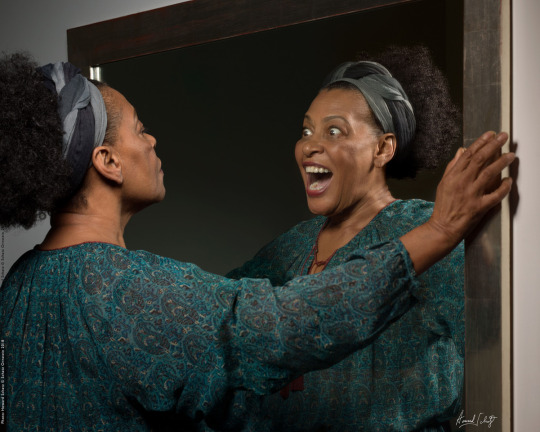
HS: A few years ago at Stanford, when you were being honored for your work, you said that you were broke and that jolted me. I thought about a successful artist, an artist who’s won a MacArthur Award and has a long list of every kind of award in the world, whose work is known internationally and has been written about positively by every great critic. It was interesting that you would, in front of an audience, reveal that.
CW: I’ve looked at how a woman’s work is valued in the open market, and the difference between the highest paid woman and the lowest paid man of a certain rank. It’s in the millions.
Georgia O'Keeffe said, all the guys like to think of me as the best female painter, but actually I'm the best painter. But the distance between what is paid for her work now, and that of, let’s say, Francis Bacon is 60 or 70 million dollars.
I think that in using this idea of being broke had to do with the ways in which work has been historically valued. I also understand it politically and socially and morally and culturally. What does it mean when we so undervalue the production of women artists?
HS: Does your success get in the way of expressing yourself personally?
CW: I don’t see myself as being successful. I don’t really know exactly what that means. There’s a certain way of course in which I'm comfortable...so why is it that I always assume I don’t really have any money, that I can’t really spend anything, that I always buy things at discount department stores? I think I was brought up that way and so that’s the way I live my life and I don’t really splurge very much. I’ll do a lavish dinner party for a friend, but I would never do it for myself.
HS: You’ve said, "The ever present threat of violence takes its toll."
CW: This is a huge problem of course. I've done many projects around it. I've lived around this so I'm highly aware of violence, in particular what it means for African-Americans. But what it means for us as a culture and as a society is also important because it’s crippling; the violence against men and women, against gays, against anyone who is different.
That violence takes a serious toll on the psyche and well-being of people. Those young children in Parkland, those concert goers in Vegas, those children at Sandy Hook… this is not just a problem for African-Americans, this is a problem of our society.
So that when you become afraid to walk down the street, when children are afraid to go to school, this is a nightmare, right? And the stress that it puts on the body, the stress that it puts on the mind, this is awful. And scary. The children are becoming more and more fearful of one another. They’re fearful of going to school, of being in social environments. What happens is that you spend more time doing anything that keeps you out of the larger social sphere, and that’s a problem.
I think that I'm really looking at it more broadly. Yes, I care about what happens to African-Americans, and I've done pieces around this like Grace Notes, the performance project that I've been working on that’s been touring around the country and opened at the Kennedy Center not long ago. It looks at the policing of the Black male body as a subject of investigation. That’s been very important to me.
HS: I have heard you say that you “had to fight so hard for every single thing."
CW: I'm a Black woman and so this carries with it a certain kind of weight and a certain kind of meaning. Women typically are disregarded. Women artists are typically disregarded. Historically, they’ve been disregarded so we’ve always had to work harder for our recognition, for a seat at the table. It’s just a part of the social dynamic in which we are engaged and involved in the society in which we live.
It’s predicated on the idea that women are powerless. How you deal with that factor, of course, is the thing that really matters. Being a Black woman, you understand what the limits are. You understand how you’re being looked at, how you’re being gauged or judged or dealt with or not dealt with.
Those are issues that I’ve always had to contend with and I’ve really sort of contended with them usually with the understanding that I'm probably the smartest person in the room. I'm usually the most interesting person in the room, and I'm certainly the hardest working person in the room. I’m usually the most imaginative person in the room.
I realized that for the most part, no matter what, there were no men that were supporting me. They might look at me and smile at me, take me to a nice dinner. They might even think about fucking me, but are they going to give me that job? Are they going to really give me that show? And the answer is no, they will not. They might give me a couple thousand of dollars…but they’re not going to give me the serious dough, the action, the space, the real space to create.
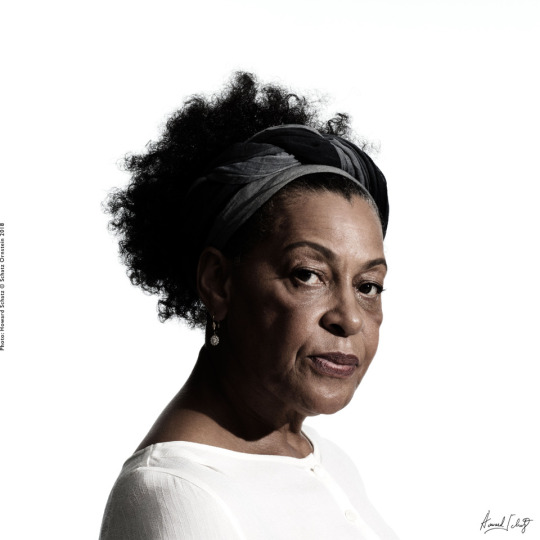
CW: It’s a huge problem for society because for the most part, these extraordinary people who hold up more than half the sky are not being recognized for the extraordinary contribution that they make to the building and the beauty of the world in which we live. And so society then suffers. Children suffer. Women suffer. Men suffer.
2 notes
·
View notes